Special Report
41 Countries the US Government Doesn't Want You to Visit
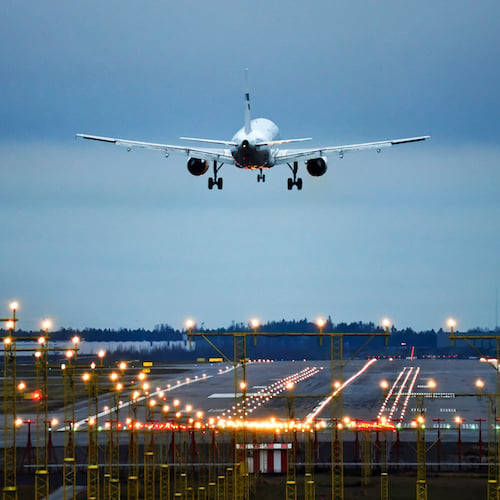
Published:
Last Updated:

The U.S. State Department issued a travel alert for all of Europe for May 1 to September 1, 2017. The alert is intended to keep Americans traveling to the continent alert and aware of potential terrorist attacks that can occur with no warning.
A number of European countries are popular destinations for American tourists, and the effect the travel alert will have on tourism revenue over the summer months remains to be seen. In addition to travel alerts, the State Department also issues much stronger warnings. The U.S. government currently has standing travel warnings for dozens of countries, including one in Europe.
[in-text-ad]
24/7 Wall St. reviewed the U.S. Department of State’s travel warning list to identify the 41 countries the U.S. government does not want you to visit.
Click here to see the 41 countries the U.S. government doesn’t want you to visit.
The State Department continuously issues and alters travel warnings and travel alerts to keep Americans informed of the potential dangers of traveling to certain countries. Travel alerts, like the one recently issued for the continent of Europe, are meant to inform travelers of events in the region that could affect their safety. They are typically short-term and less severe than travel warnings, which the the State Department issues when the government would like travelers to consider very carefully whether they should go to that country at all. The State Department issued travel warnings for every country on this list.
Travel warnings can be issued for a variety of reasons and can also vary in severity. Many of the Middle Eastern and African countries on this list are unsafe due to the threat of terrorism and danger arising from social and political instability. Such countries include Yemen, Egypt, Syria, and the Democratic Republic of the Congo.
The security situation in other countries on this list is far less severe. Colombia and Mexico both have standing travel warnings due in large part to drug trafficking violence and kidnappings for ransom. Still, parts of these countries are quite safe, and as a result millions of Americans visit these countries every year.
While in most cases terrorist groups, criminals, and anti-government rebel factions pose the threats, there is at least one notable exception. In North Korea, the main threat to American citizens is the government itself. Americans risk arrest, long-term sentences, and even hard-labor for infractions that are not considered criminal in the United States. Punishable offenses in the authoritarian country include taking unauthorized photographs, shopping at stores not designated for foreigners, and disrespecting the country’s current and former leaders.
The risks of traveling in these countries is certainly not limited only to Americans or even just to tourists. Often, the conditions that make travel risky also make daily lives of the local population difficult and dangerous.
To identify the countries the U.S. Government does not want you to visit, 24/7 Wall St. reviewed the State Department’s list of countries with standing travel warnings as of May 3, 2017. Reasons for issuing a travel warning might include unstable government, civil war, ongoing intense crime or violence, or frequent terrorist attacks. The lower level travel alerts from the State Department are issued for tumultuous election seasons, disease outbreaks, or elevated risk of terrorist strikes. We did not consider countries with standing travel alerts. Population figures and GDP per capita figures are for the most recent year available and are from the World Bank.
These are the countries the U.S. government doesn’t want you to visit.

1. Afghanistan
> 2015 Population: 32.5 million
> 2015 GDP per capita: $594
As with many countries in the region, terrorist attacks are the primary threats to Americans traveling in Afghanistan. Extremist groups, including ISIS and the Taliban, are active throughout the country. U.S. and coalition forces have been fighting al-Qaida and Taliban forces in Afghanistan since 2001. Traveling to any part of the country may be unsafe due to the ongoing violence. Travelers can encounter improvised explosive devices, direct and indirect gunfire, and risk kidnapping and hostage taking.
[in-text-ad]

2. Algeria
> 2015 Population: 39.7 million
> 2015 GDP per capita: $4,154
While there is typically a heavy police presence in major urban centers in Algeria, cities across the country are still vulnerable to terrorist attacks. Organizations linked to ISIS and al-Qaida operate within the country, and kidnappings and terrorist bombings have occurred near the country’s southern and eastern borders.

3. Bangladesh
> 2015 Population: 161.0 million
> 2015 GDP per capita: $1,212
Following a deadly terrorist attack at a restaurant popular with foreigners in July 2016, the U.S. State Department intensified its travel warning for U.S. citizens and personnel traveling in Bangladesh. As the terror threat in the country remains, U.S. government officials there are currently prohibited from traveling on foot or in open air vehicles, attending large gatherings, and visiting public places.
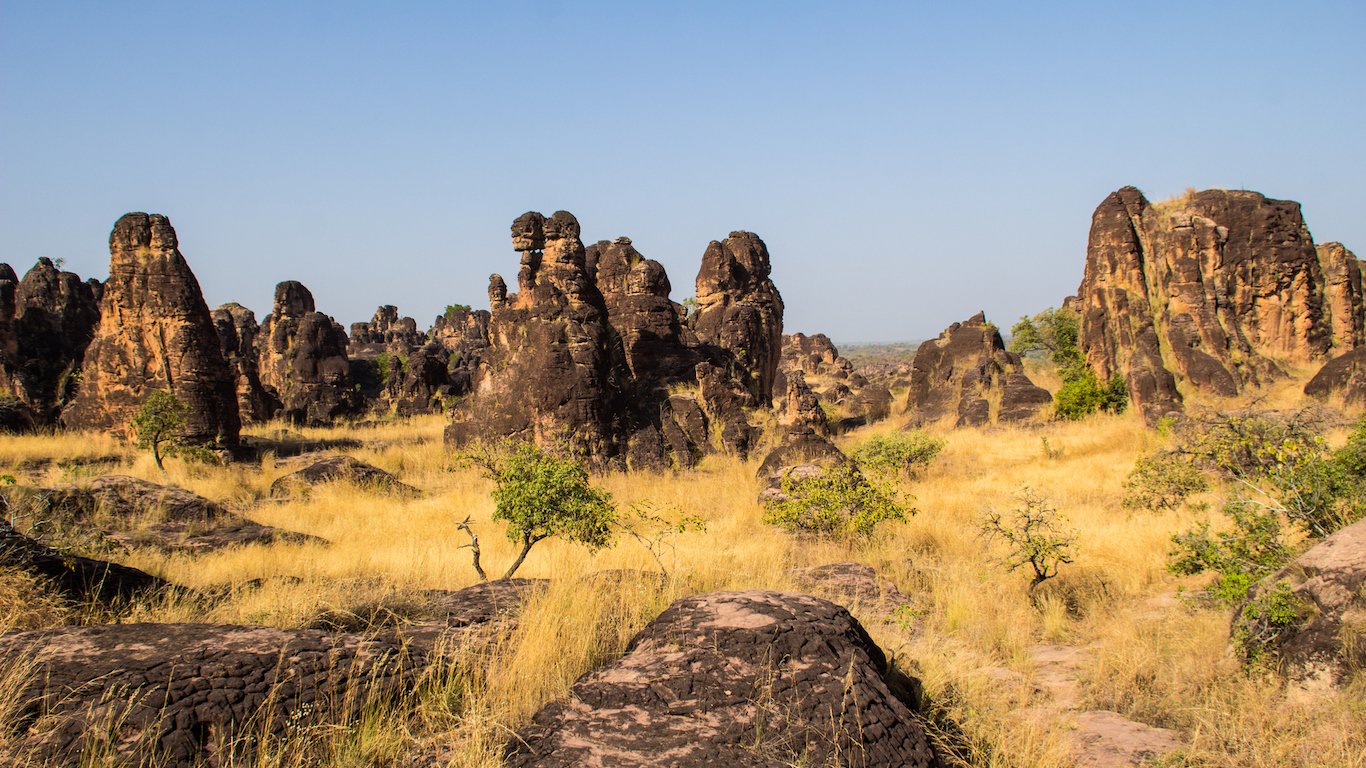
4. Burkina Faso
> 2015 Population: 18.1 million
> 2015 GDP per capita: $590
The State Department has urged American travelers to reconsider visiting the landlocked African nation due to a host of security concerns. The potential for violence and murder is relatively high in Burkina Faso. Earlier this year, assailants targeted civilians at a hotel and restaurant, killing people from 18 countries — including one American. The U.S. embassy’s ability to provide assistance is also extremely limited in the more remote areas of Burkina Faso.
[in-text-ad-2]
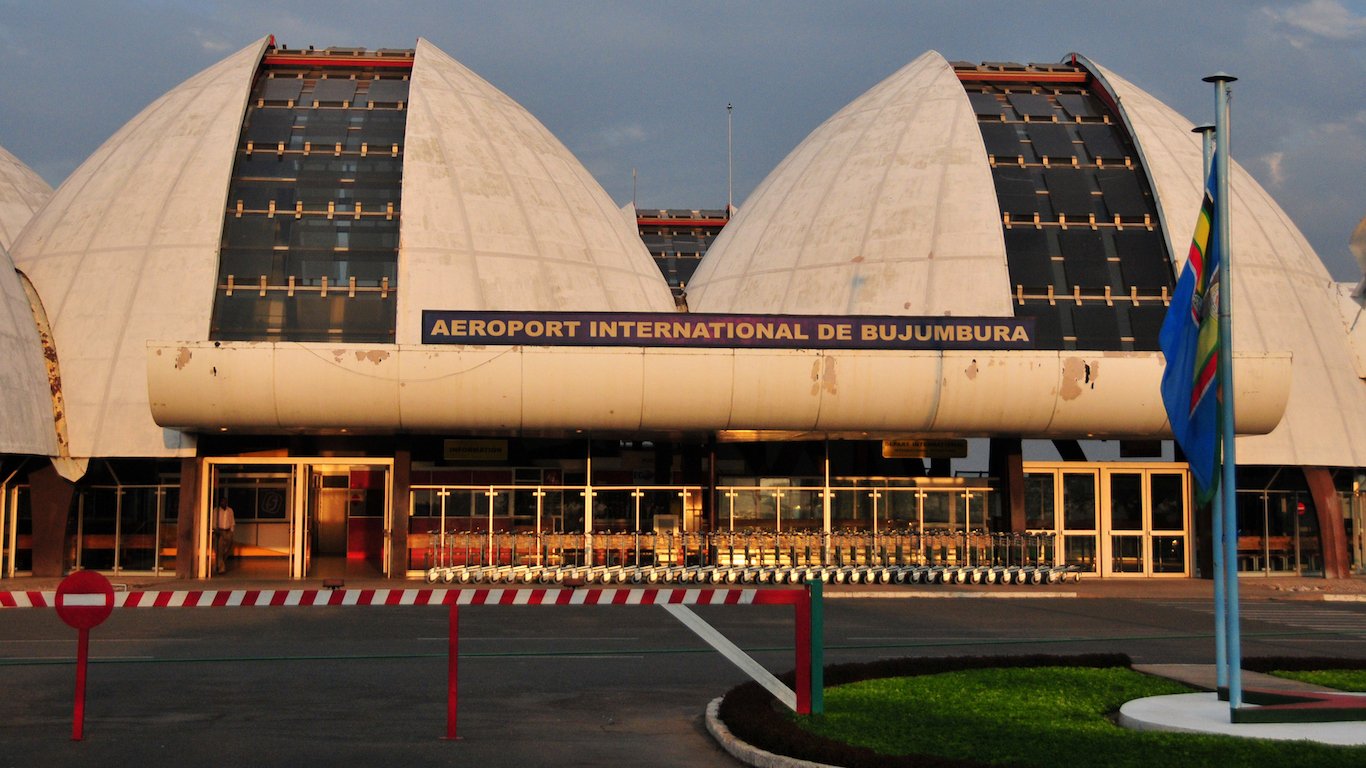
5. Burundi
> 2015 Population: 11.2 million
> 2015 GDP per capita: $277
The State Department advises against all travel to Burundi for American citizens. Following a contested election in 2015, political tension and violent clashes escalated throughout the country. Violent incidents involving explosives and firearms are common. State Department personnel are prohibited from leaving the embassy host city of Bujumbura at night.

6. Cameroon
> 2015 Population: 23.3 million
> 2015 GDP per capita: $1,217
The government advises Americans to carefully consider any travel to Cameroon. Specifically, the State Department advises against travel to the northern and eastern regions of the country. There have also been reports of increasing unrest in the northwest and southwestern regions in recent months. Visitors face especially high risk of violent crime given that foreigners have been targeted by terrorist group Boko Haram with kidnappings and suicide bombings.
[in-text-ad]
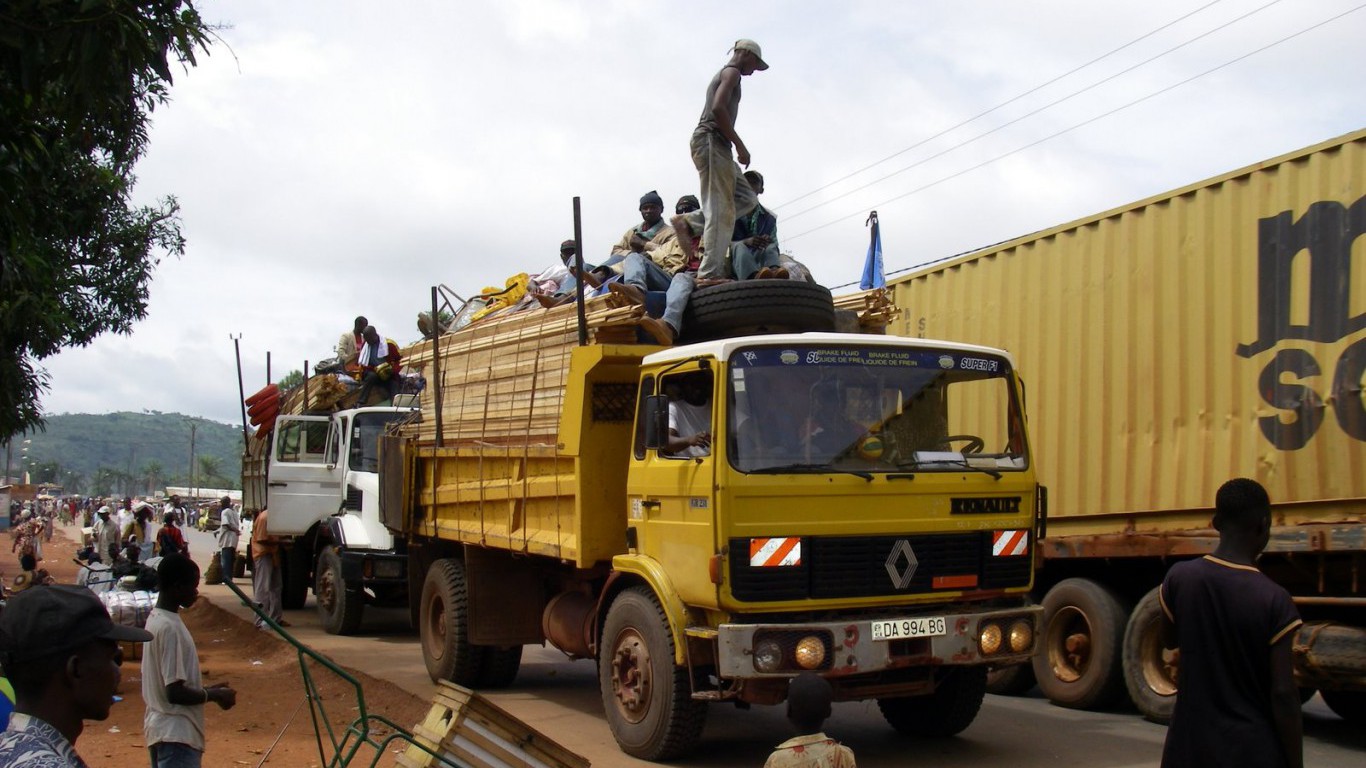
7. Central African Republic
> 2015 Population: 4.9 million
> 2015 GDP per capita: $323
Following the overthrow of the government in 2013, Central African Republic has become highly dangerous for residents and foreigners alike. Though the United Nations has deployed a stabilization force, and a new president was elected in 2016, the potential for sectarian and indiscriminate violence is high. In the event the CAR descends into widespread conflict, which currently seems likely, travelers could find it difficult to leave the country.
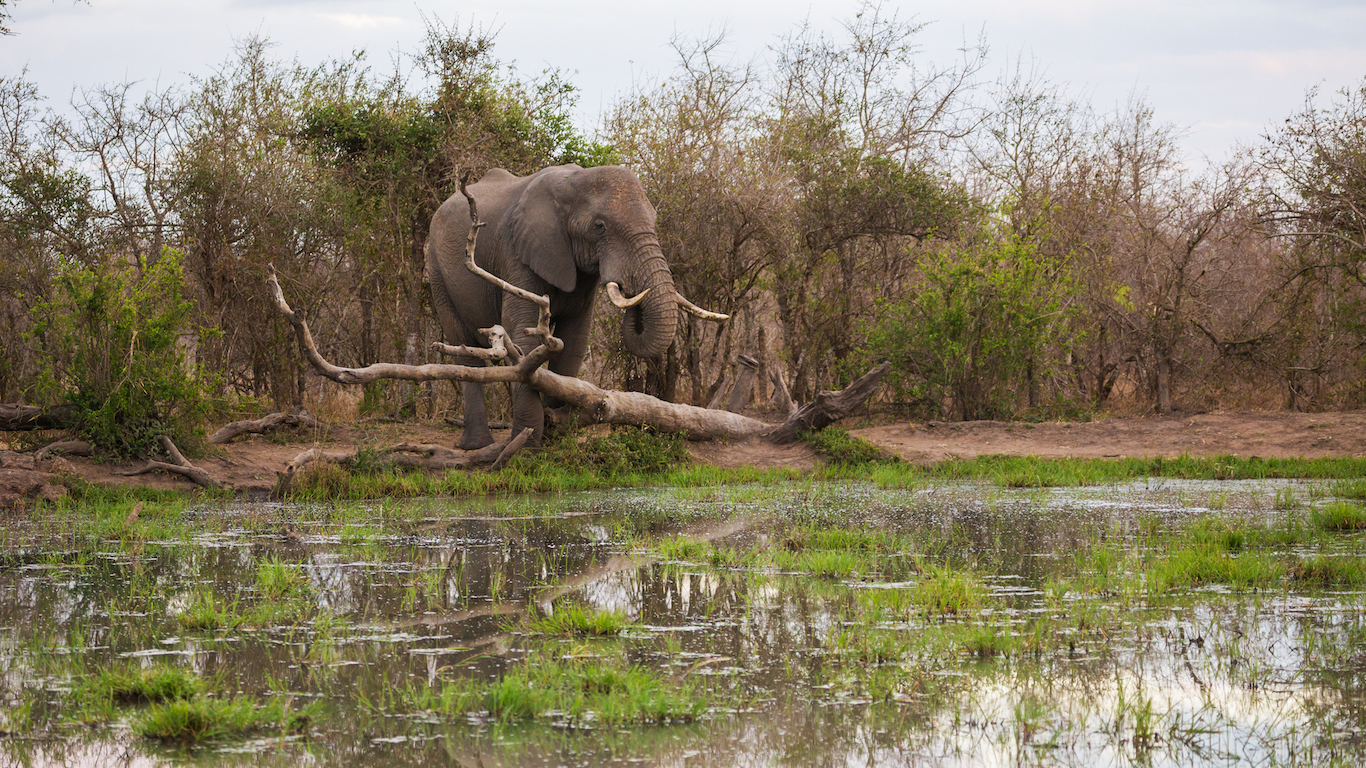
8. Chad
> 2015 Population: 14.0 million
> 2015 GDP per capita: $776
With multiple terrorist groups operating in Chad, the U.S. State Department urges Americans to completely avoid border regions and to exercise extreme caution when traveling in the rest of the country. In addition to 2015 Boko Haram suicide bombings, al-Qaida in the Islamic Maghreb declared its intent to carry out attacks on Western targets in the country.

9. Colombia
> 2015 Population: 48.2 million
> 2015 GDP per capita: $6,056
Colombia is far safer than many other countries on this list. The threat to tourist safety posed by the left-wing terrorist organization known as FARC has largely subsided since the group leaders struck a peace deal with the Colombian government last year. While Columbia is far safer than many other countries on this list, the risk of violence linked to drug trafficking and kidnapping remains.
[in-text-ad-2]
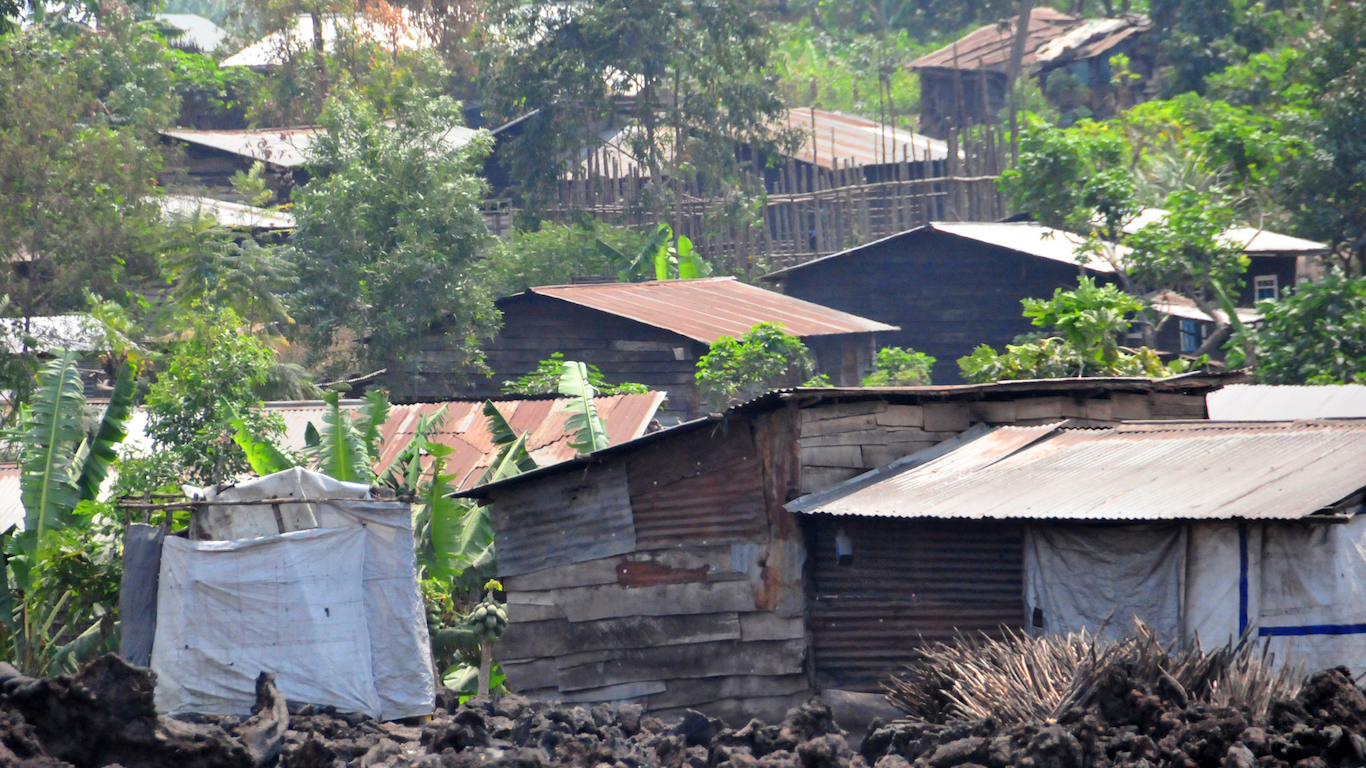
10. Democratic Republic of the Congo
> 2015 Population: 77.3 million
> 2015 GDP per capita: $456
Rife with political and social instability, the Democratic Republic of the Congo is one of the world’s most dangerous countries. Armed groups, including members of the Congolese armed forces, operate throughout the country and often carry out killings, kidnappings, robberies, and rapes indiscriminately. Due to threats, the State Department’s presence in the country is limited. As a result, U.S. citizens cannot rely on State Department services should they need to evacuate the DRC.
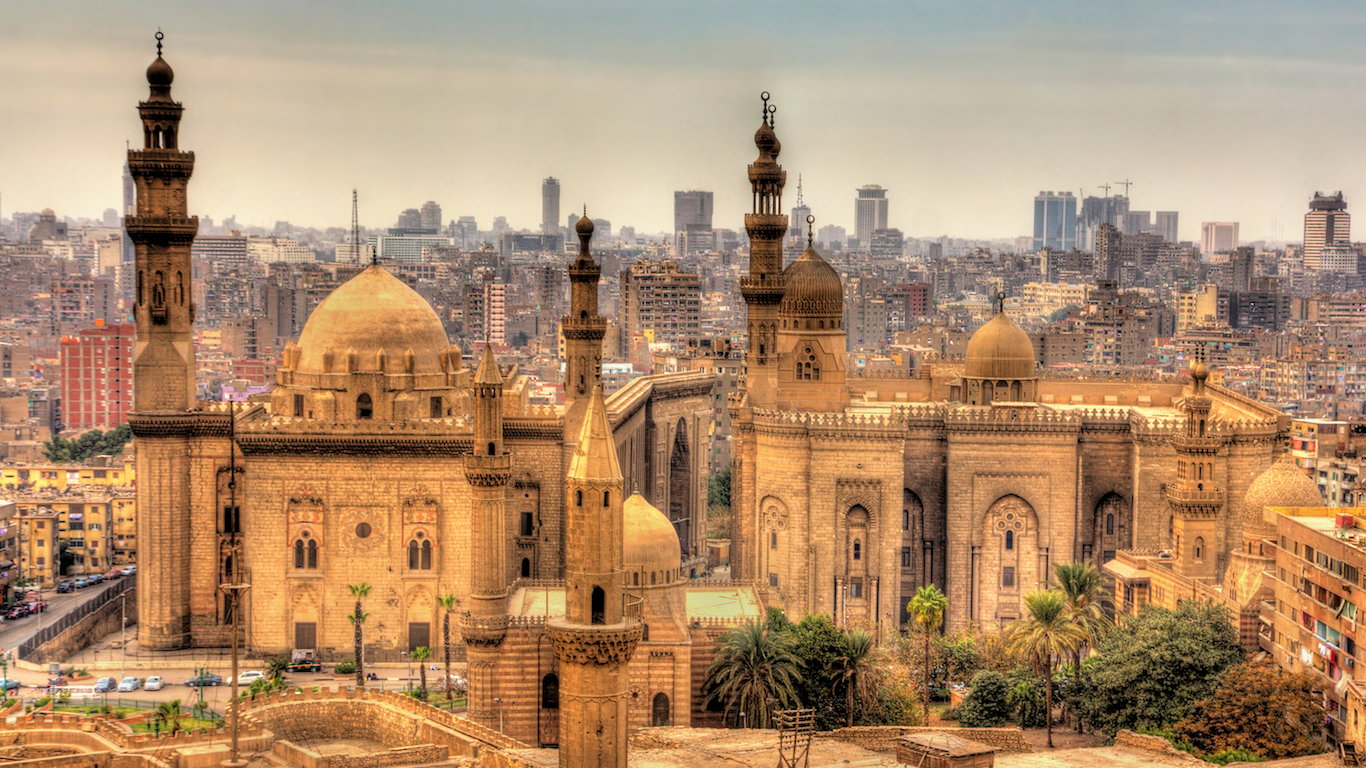
11. Egypt
> 2015 Population: 91.5 million
> 2015 GDP per capita: $3,615
Like many countries in the Middle East and North Africa, Egypt is included on the State Department’s travel warning list due to the known presence of terrorist groups such as ISIS. Though many parts of the country are heavily guarded by government security forces, terrorist groups in recent years have carried out attacks on government and tourist targets alike. Citing security concerns, the U.S. Embassy in Egypt prohibits travel by diplomatic personnel in certain parts of the country.
[in-text-ad]
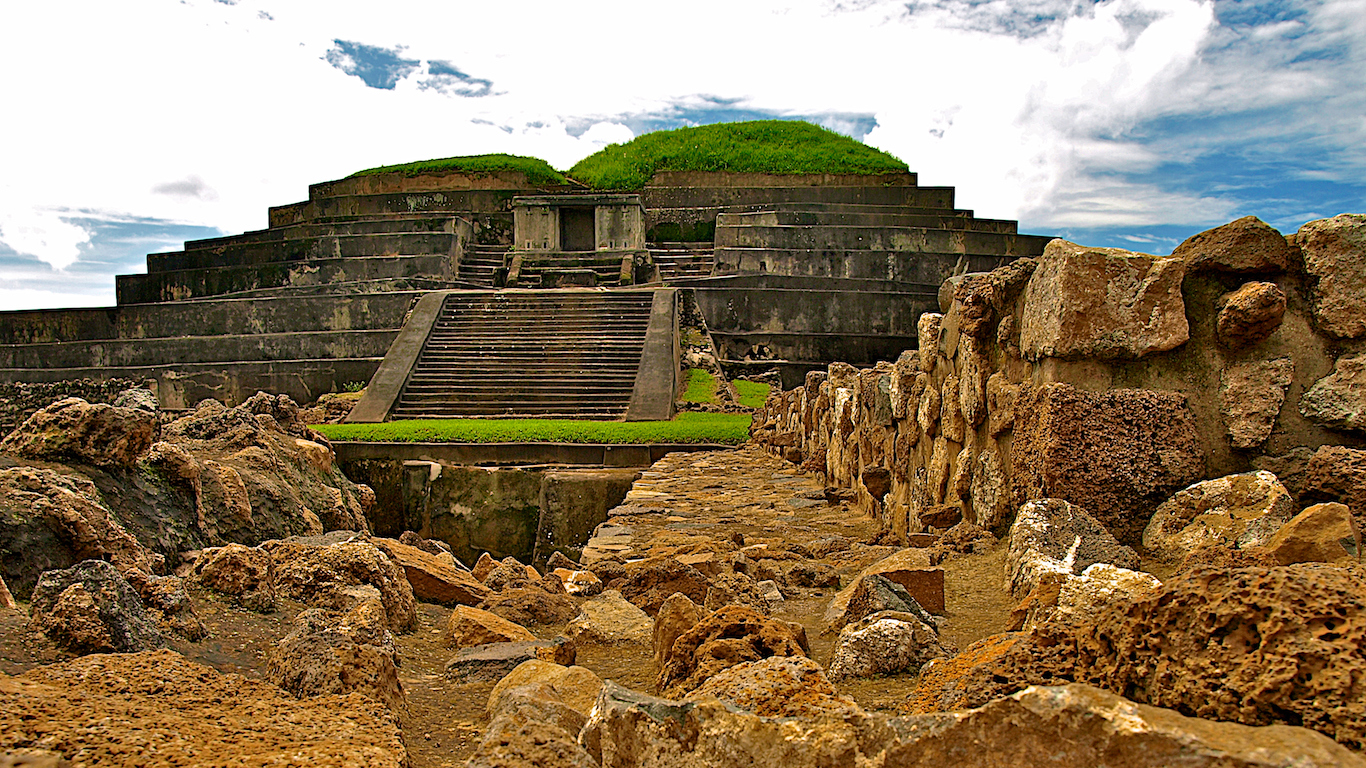
12. El Salvador
> 2015 Population: 6.1 million
> 2015 GDP per capita: $4,219
While there is no evidence to suggest that Americans are being targeted, El Salvador remains a particularly dangerous country for U.S. travelers. The country’s murder rate is one of the highest in the world, and extortion, mugging, home invasion, and car theft are also relatively common. With rampant crime, the State Department encourages U.S. citizens in the country to remain alert.
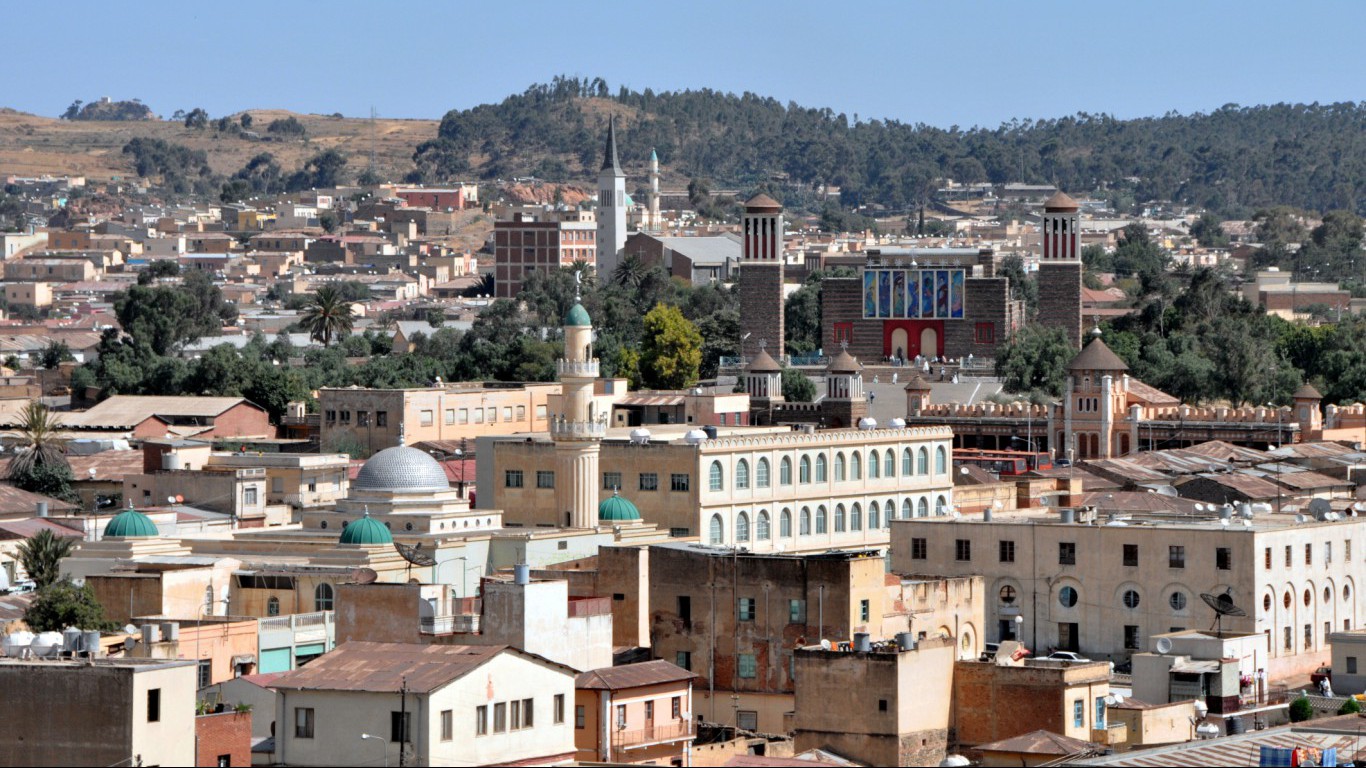
13. Eritrea
> 2015 Population: N/A
> 2011 GDP per capita: $544
Military tensions are high along Eritrea’s borders with its neighboring countries, and fighting along the Ethiopia border in June 2016 resulted in several deaths. Due to restrictions imposed by Eritrea’s government, all foreign nationals are required to obtain permits to travel outside of the country’s capital, Asmara.
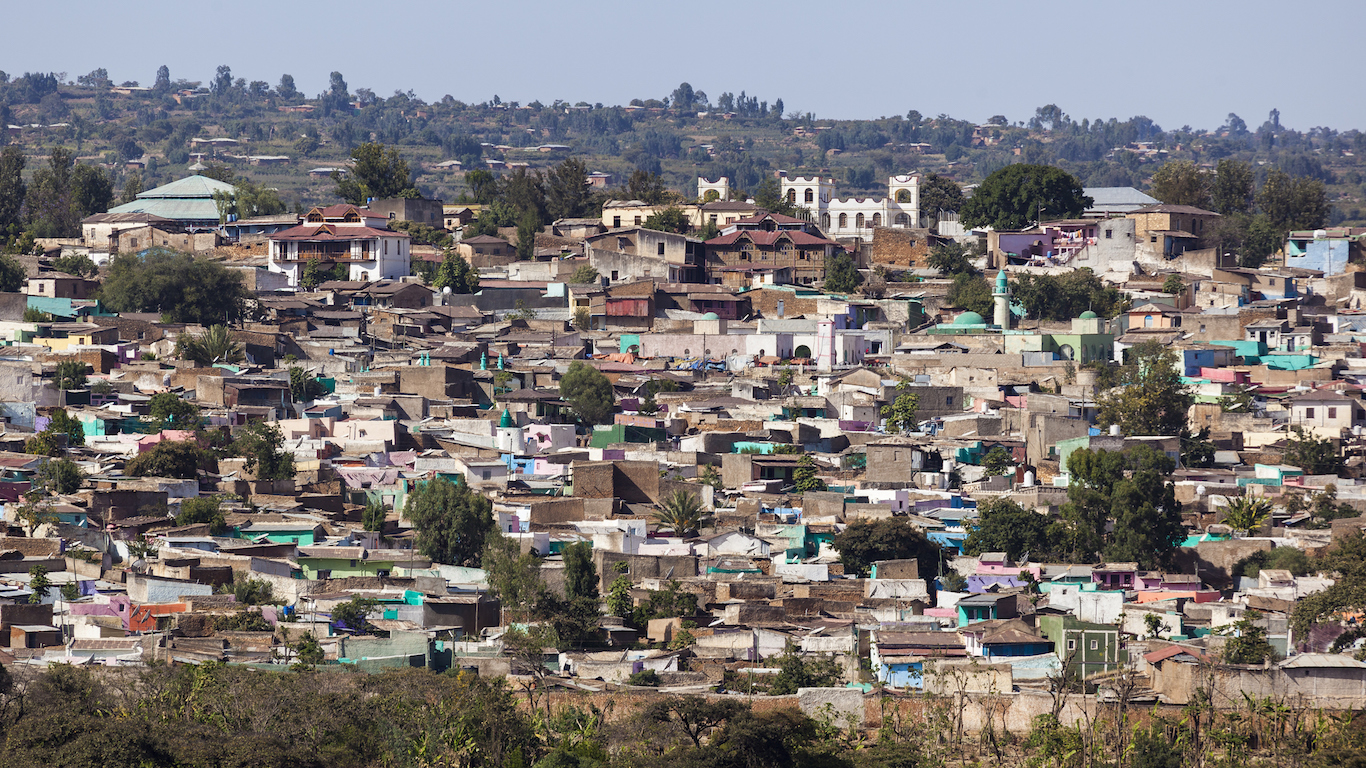
14. Ethiopia
> 2015 Population: 99.4 million
> 2015 GDP per capita: $619
U.S. tourist travel to Ethiopia is dangerous primarily because of widespread civil unrest. Anti-government protests led the East African country to declare a state of emergency last October that still stands today. In addition, the Ethiopian government routinely does not notify the U.S. Embassy when an American citizen is detained. Internet and cellular communication are unreliable in the country, which can be a further impediment for Americans seeking consular assistance.
[in-text-ad-2]

15. Haiti
> 2015 Population: 10.7 million
> 2015 GDP per capita: $818
When Category 4 Hurricane Matthew struck Haiti last October, the impact on the impoverished country was devastating. Months removed from the hurricane, Haiti’s infrastructure is still struggling to recover from Matthew. The U.S. State Department’s travel warning for the area remains in effect, citing continuing crime and civil unrest.
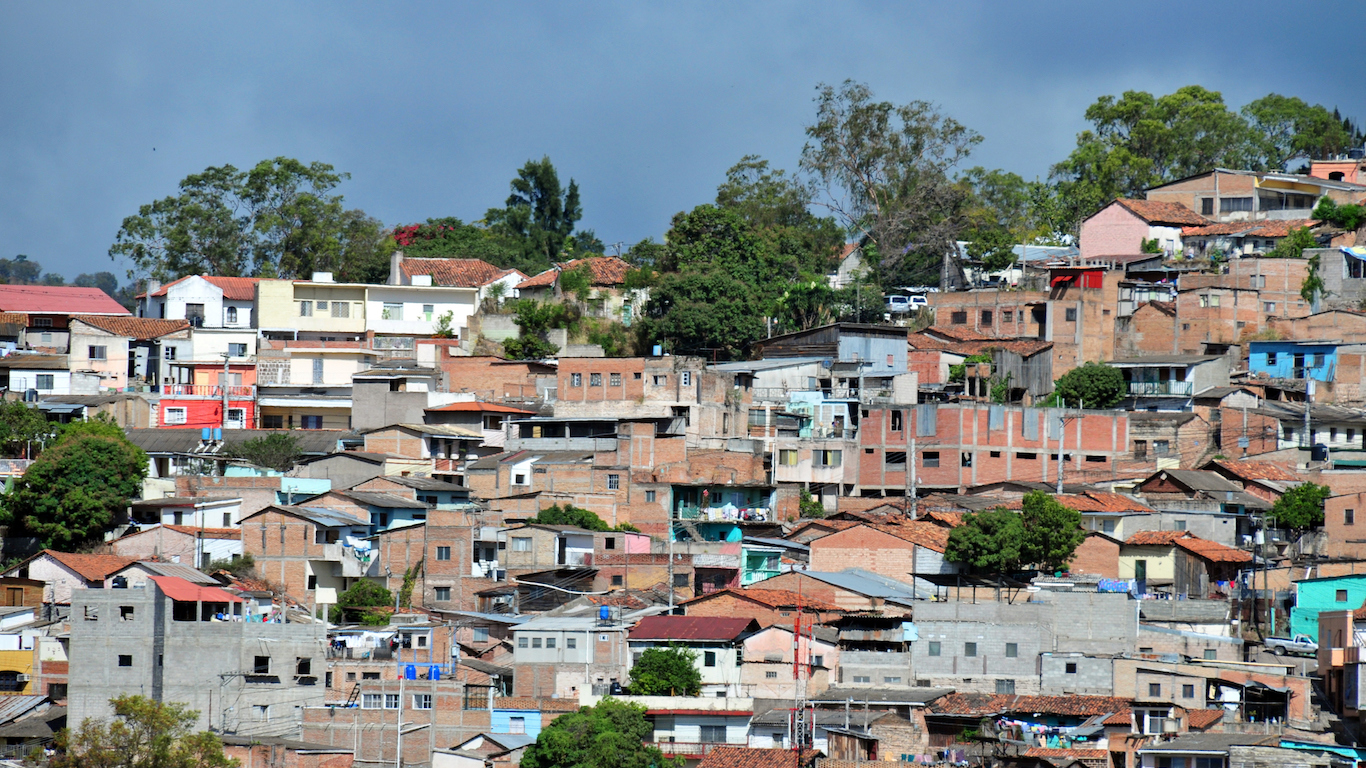
16. Honduras
> 2015 Population: 8.1 million
> 2015 GDP per capita: $2,529
Since 2010, 42 Americans have been murdered in Honduras. Violent crime, and particularly kidnapping, is common throughout the country. As Honduras lacks the necessary resources to defend against, investigate, and prosecute these crimes, the majority of murders in the country go unsolved.
[in-text-ad]
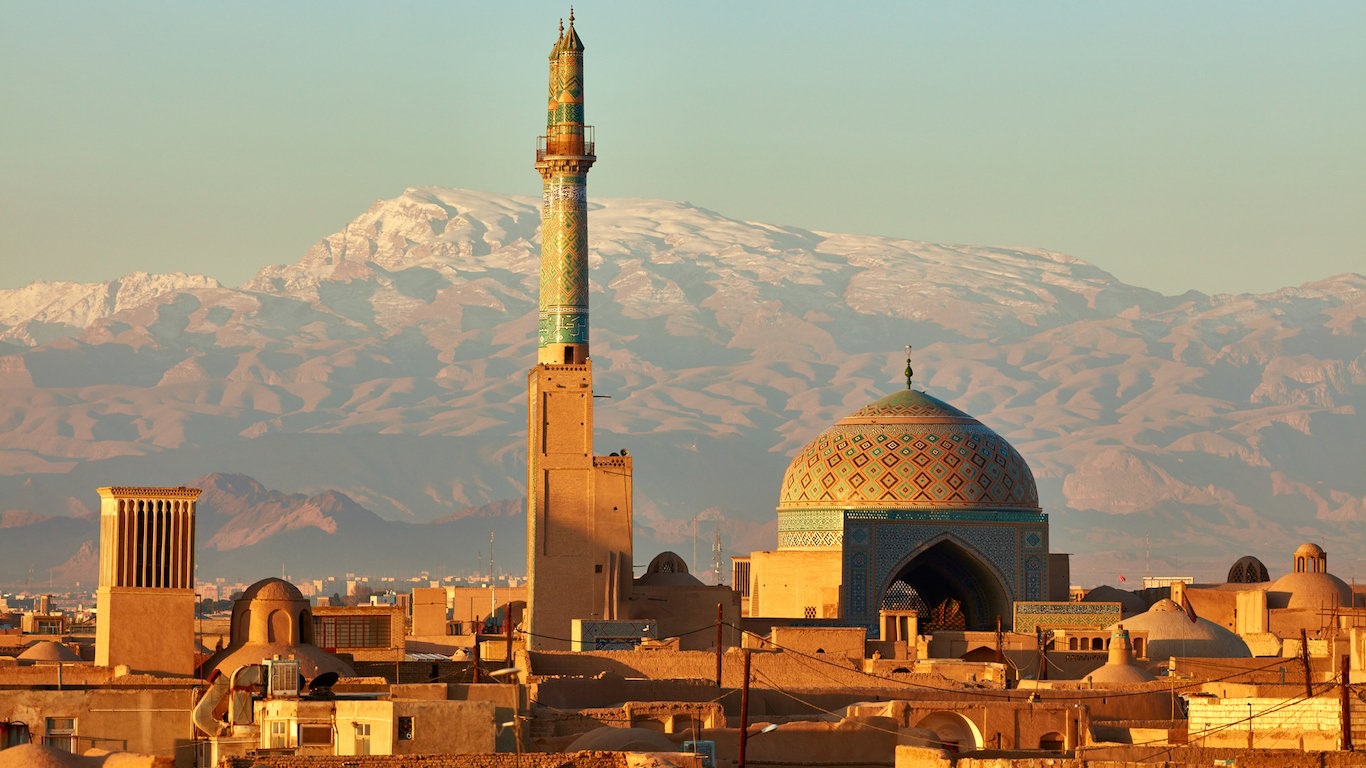
17. Iran
> 2015 Population: 79.1 million
> 2014 GDP per capita: $5,443
Americans traveling in Iran, particularly those who are also Iranian citizens, are at risk of being detained and imprisoned for suspected espionage. The United States has not had an embassy in Iran since it broke diplomatic relations with the country in 1979. As a result, the State Department reminds Americans that its “ability to assist U.S. citizens in Iran in the event of an emergency is extremely limited.”
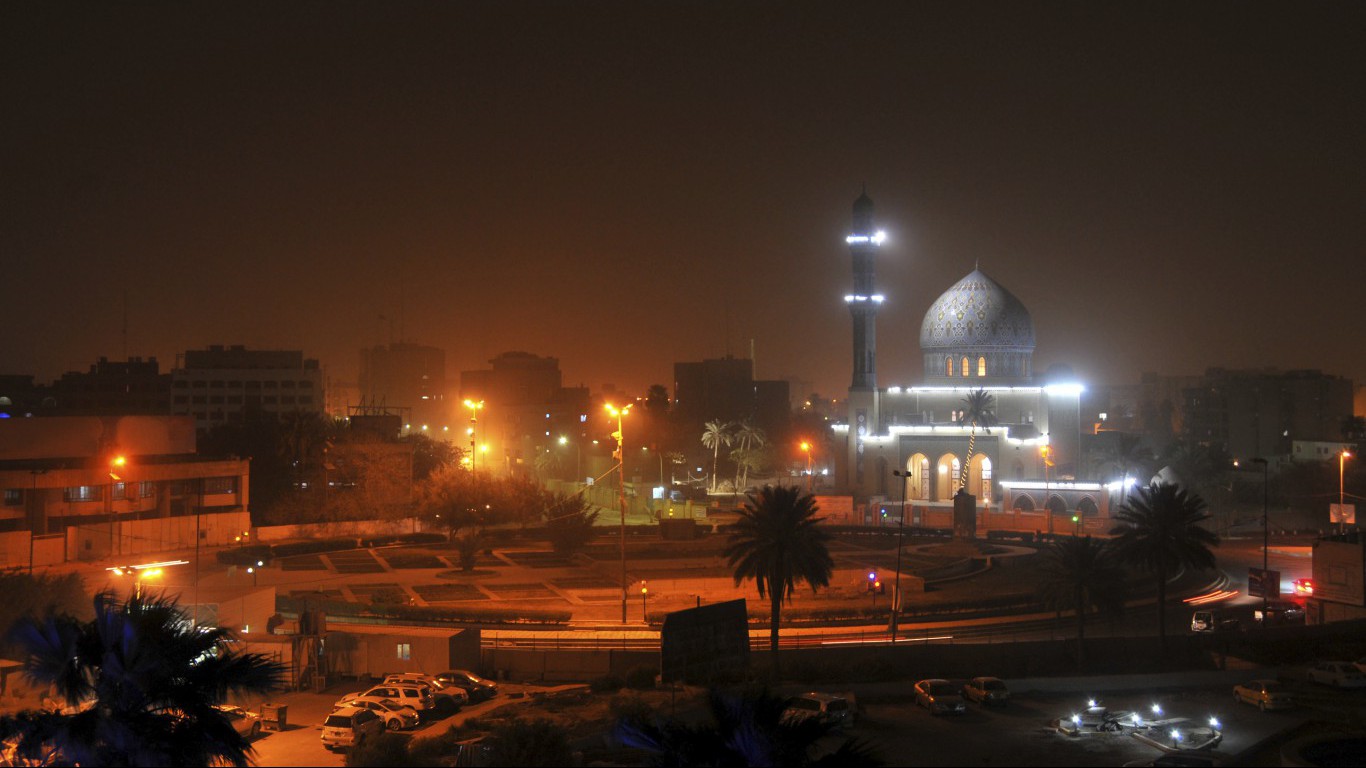
18. Iraq
> 2015 Population: 36.4 million
> 2015 GDP per capita: $4,944
With many active militant and terrorist groups, Iraq is especially dangerous, particularly for Americans. U.S. citizens are often targeted by sectarian militias in kidnappings and other violence. In addition to large swaths of territory in northern, western, and central Iraq, ISIS is currently fighting to maintain its control of Mosul, the second largest city in the country.
Supporters of the Iraqi and Western governments, as well as those who identify as LGBT or are religious or ethnic minorities, are at increased risk of imprisonment or execution in ISIS-controlled territories.

19. Israel, The West Bank and Gaza
> 2015 Population: 8.4 million, 4.4 million
> 2015 GDP per capita: $35,729, $2,867
The security situation in the contested Israeli-controlled occupied territories — the West Bank and the Gaza Strip — is complex and unpredictable. The U.S. State Department urges all Americans in the Gaza Strip to depart immediately, partially because it is controlled by Hamas, a terrorist organization. Though the rest of the region is not as dangerous, violent attacks that often lead to collateral damage still occur with some regularity.
[in-text-ad-2]

20. Jordan
> 2015 Population: 7.6 million
> 2015 GDP per capita: $4,940
Jordan is a key player in the fight against ISIS. It also shares a border with Iraq and Syria. As such, it is increasingly the target of terrorist plots. Recent attacks have targeted both American and Jordanian citizens. Travel to certain parts of the Middle Eastern country is restricted for U.S. government employees, and the State Department advises American citizens to carefully weigh the risks before traveling to Jordan.
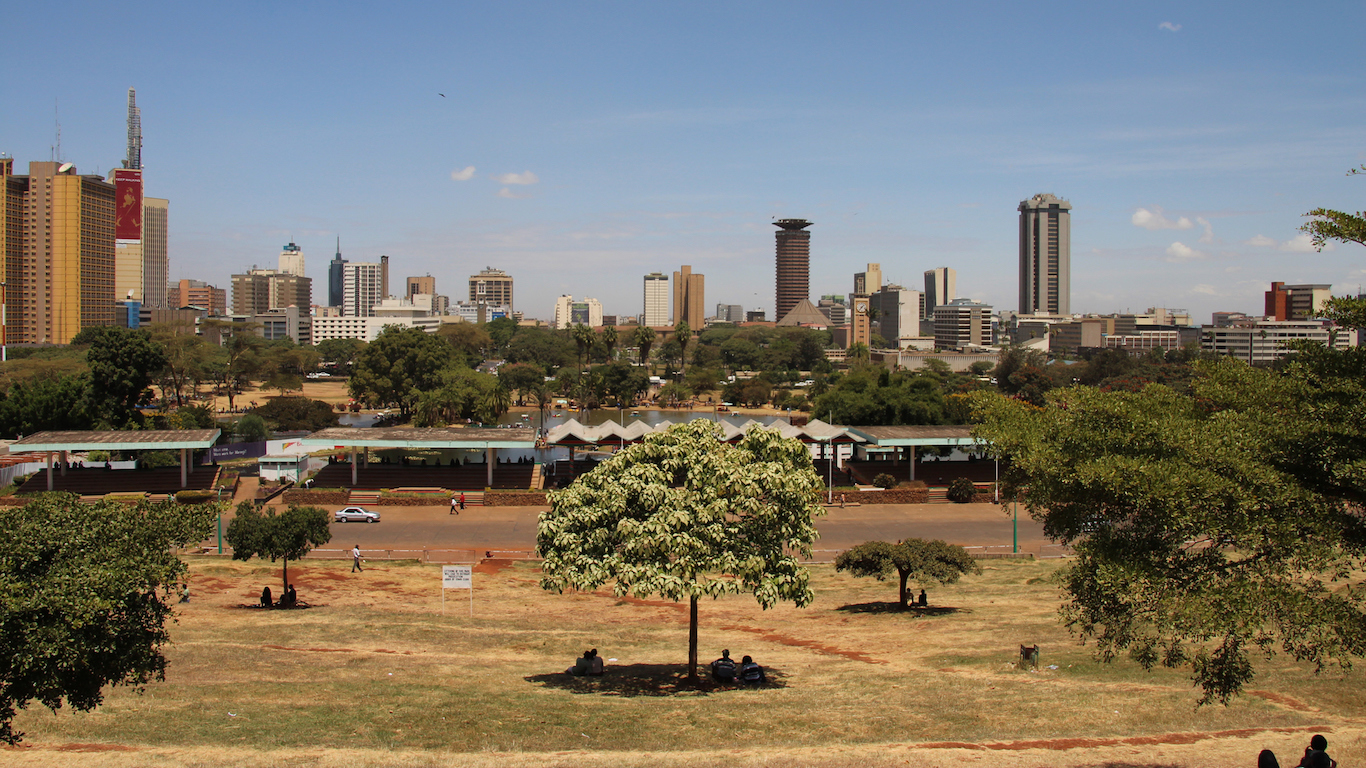
21. Kenya
> 2015 Population: 46.1 million
> 2015 GDP per capita: $1,377
While thousands of Americans travel safely to and from Kenya, terrorist groups have made parts of the East African country unsafe for travel. The terrorist organization al-Shabaab typically operates in the country’s border areas, targeting bars, nightclubs, public transit, as well as government sites. The group claimed responsibility for an April 2015 attack on a university that claimed nearly 150 lives.
[in-text-ad]

22. Lebanon
> 2015 Population: 5.9 million
> 2015 GDP per capita: $8,048
Threats of terrorist attacks and kidnapping make Lebanon an especially risky country for American travelers. Multiple terrorist groups, including ISIS and Hezbollah, operate in the country. Suicide bombings across the country in the last two years have claimed dozens of lives. According to the State Department, Americans choosing to remain in Lebanon should remember that access to an airport may be cut off in the event of violent conflict.
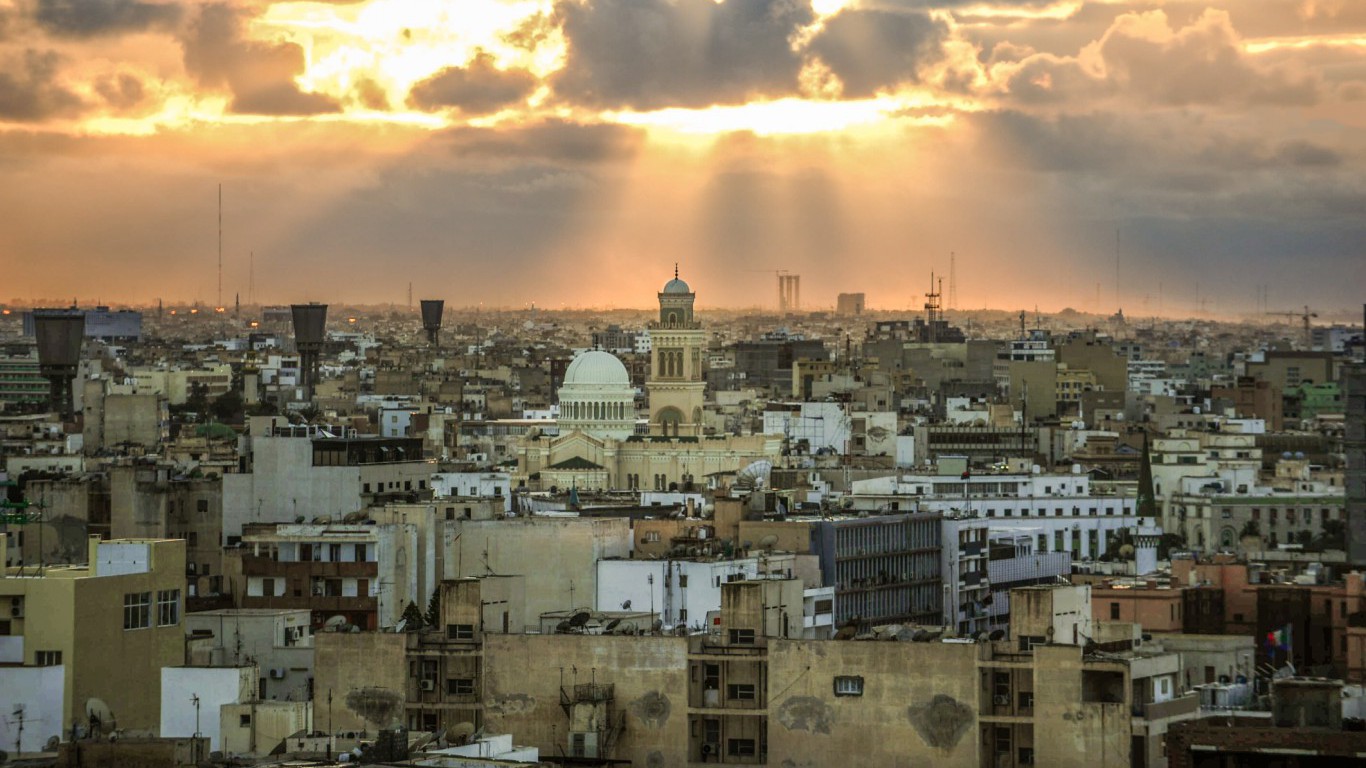
23. Libya
> 2015 Population: 6.3 million
> 2011 GDP per capita: $5,518
The State Department’s advisory against travel to Libya is far stronger than in most other cases. The government discourages all travel to the country and urges all Americans there to depart immediately. Crime is rampant in Libya, and the government’s control is limited to certain areas. Extremist groups are known to target Americans, and the U.S. government shuttered its embassy operations in the country in July 2014, about two years after the deadly Benghazi attack in which U.S. Ambassador to Libya Christopher Stevens and three officers were killed.
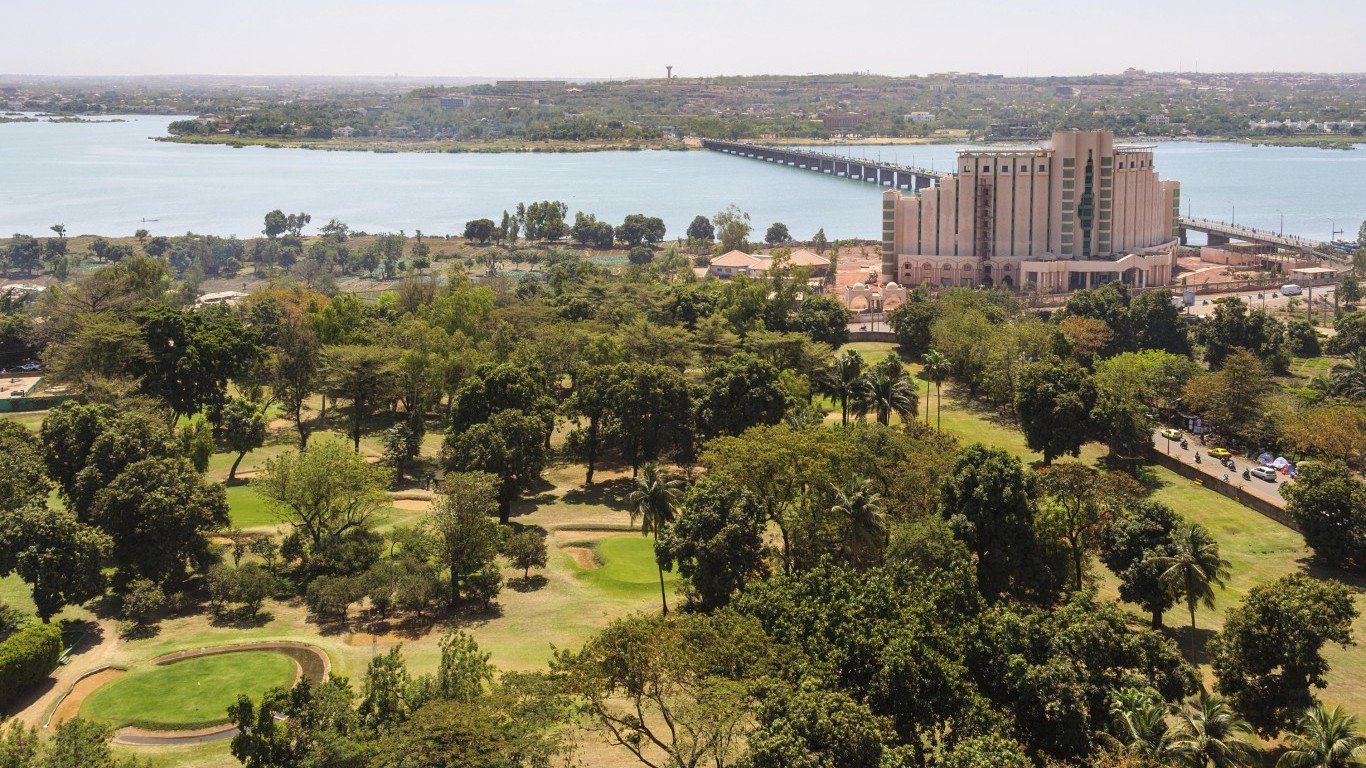
24. Mali
> 2015 Population: 17.6 million
> 2015 GDP per capita: $724
Multiple terrorist groups, including al-Qaida in the Islamic Maghreb, currently operate within Mali. Such groups, which have been known to target foreigners, claimed responsibility for a November 2015 attack on a hotel that killed 20 people, including one American. Due to the unstable security situation, American officials are restricted from traveling outside the country’s capital region. At the end of 2016, the U.S. State Department restricted anyone younger than 22 from accompanying government officials stationed in the country.
[in-text-ad-2]

25. Mauritania
> 2015 Population: 4.1 million
> 2014 GDP per capita: $1,371
Like many other countries in the region, the presence of terror groups makes Mauritania an especially unsafe country for American travelers. Dangers include kidnapping and other violent acts. U.S. Embassy officials are restricted from traveling outside of the capital city without special authorization.

26. Mexico
> 2015 Population: 127.0 million
> 2015 GDP per capita: $9,005
Despite sharing a border with California, Arizona, New Mexico, and Texas, Mexico can be a dangerous country for American travelers. Though millions of Americans travel annually to popular tourist destination that are generally safe, much of the rest of country is unsafe due to regular violence tied to drug trafficking. Kidnapping, carjacking, robbery, and gun battles between rival gangs are not uncommon in these parts.
[in-text-ad]
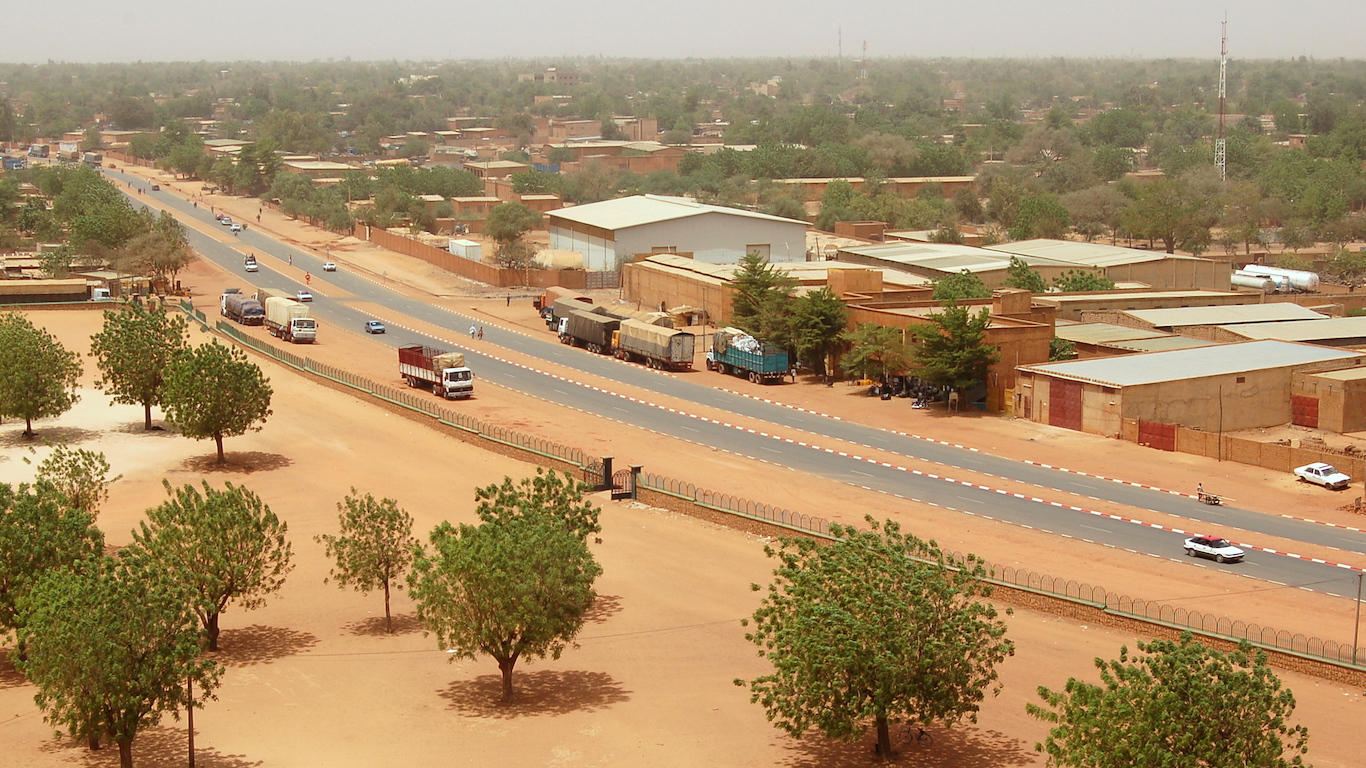
27. Niger
> 2015 Population: 19.9 million
> 2015 GDP per capita: $359
Many areas of Niger are remote, and the U.S. embassy’s ability to assist Americans in emergency situations in these rural areas is severely limited. The terrorist group Boko Haram, among others, operates in the country, and terrorist attacks have caused aid organizations, NGOs, and foreign companies to suspend operations in the country.
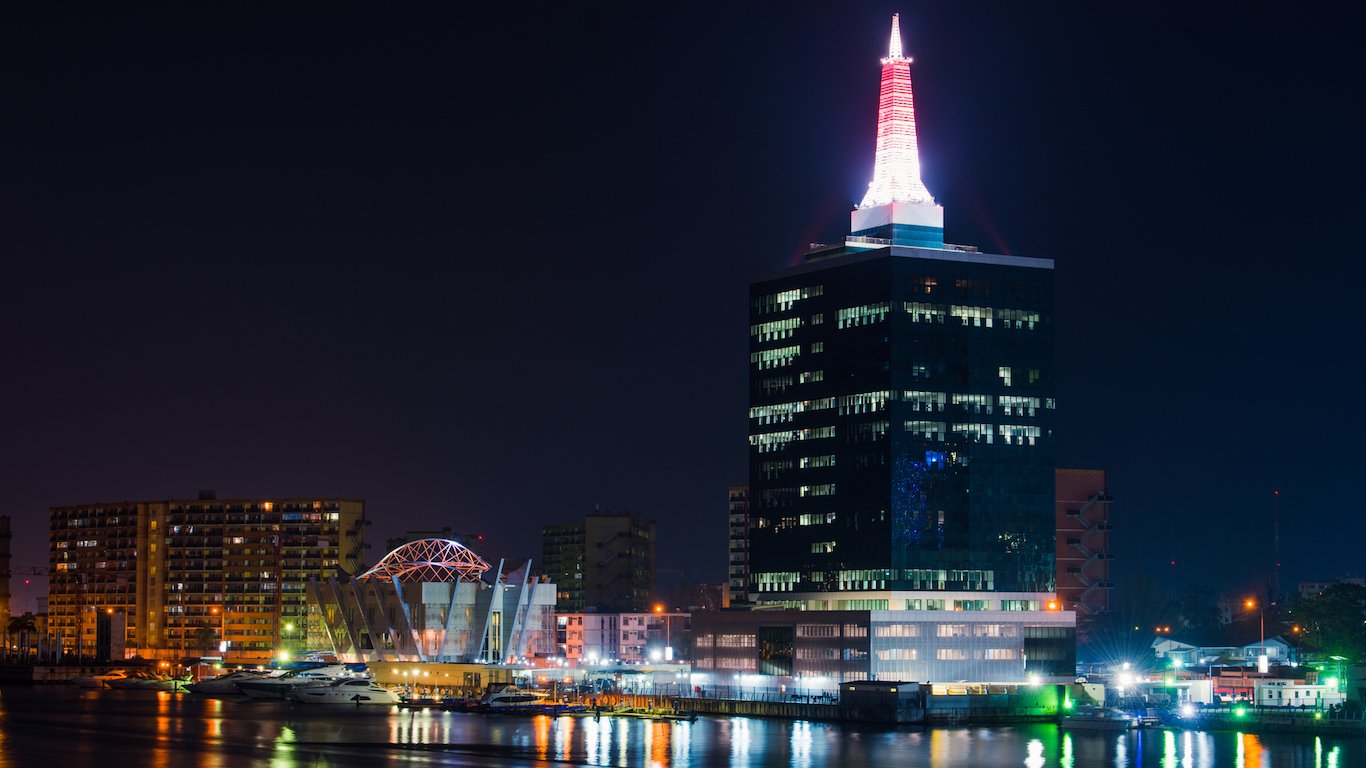
28. Nigeria
> 2015 Population: 182.2 million
> 2015 GDP per capita: $2,672
The State Department advises against all non-essential travel in the northeast region of Nigeria, where Boko Haram has carried out multiple attacks. Due to the threat of terrorism, Americans are advised to avoid large crowds and certain destinations, including shopping malls, churches, clubs, and markets. Kidnappings and robberies are also common in certain parts of Nigeria.
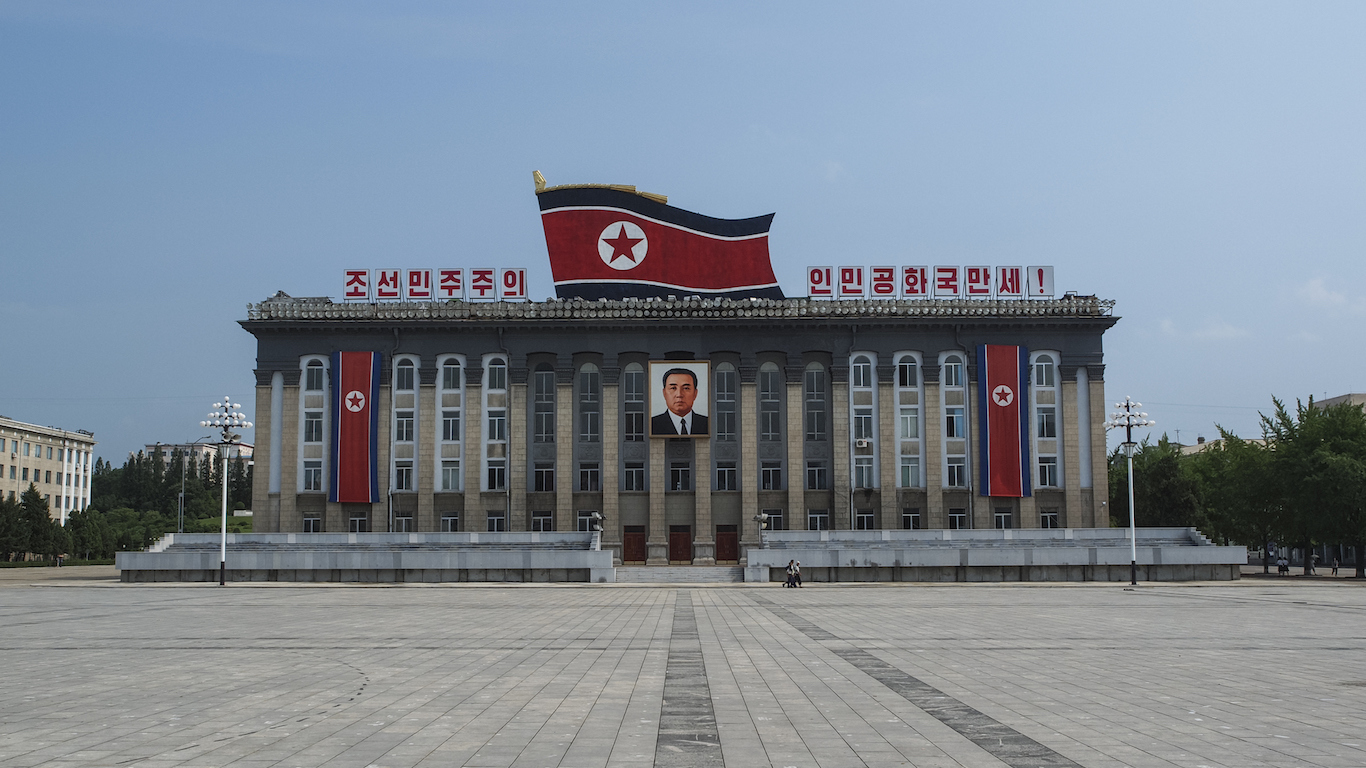
29. North Korea
> 2015 Population: 25.2 million
> 2015 GDP per capita: N/A
In many dangerous countries, terrorist groups unaffiliated with the government pose the biggest risk to personal safety. In North Korea, however, the government itself poses the greatest risk to American visitors. Electronic devices, including laptops, smartphones, and USB drives, are subject to search for prohibited content, which includes media that is critical of the North Korean government. U.S. citizens risk arrest, fines, long-term detention, and hard labor for certain such transgressions and others that are not considered crimes in the United States.
[in-text-ad-2]
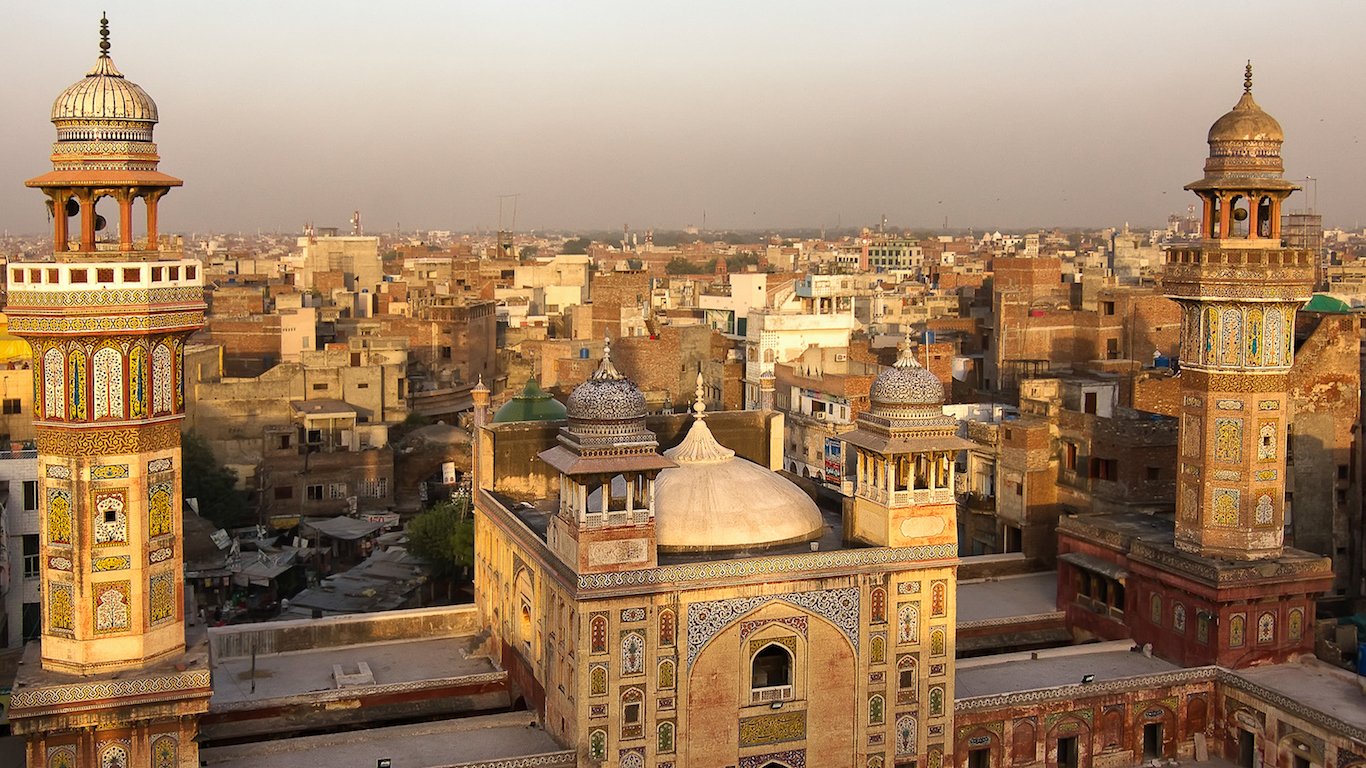
30. Pakistan
> 2015 Population: 188.9 million
> 2015 GDP per capita: $1,435
Deadly terrorist attacks are relatively common in Pakistan — and they frequently target areas where Americans and other Westerners congregate. Americans have also been the victims of kidnappings. Because of security risks, U.S. government officials in the country are prohibited from using public transportation or staying at hotels.

31. Philippines
> 2015 Population: 100.7 million
> 2015 GDP per capita: $2,904
Many parts of the Philippines are deemed unsafe for American travelers. Kidnapping and terrorist violence is relatively common on the island of Mindanao and the Sulu Archipelago. According to the State Department, at least 13 separate kidnappings of foreigners have been reported in Mindanao since January 2016.
[in-text-ad]
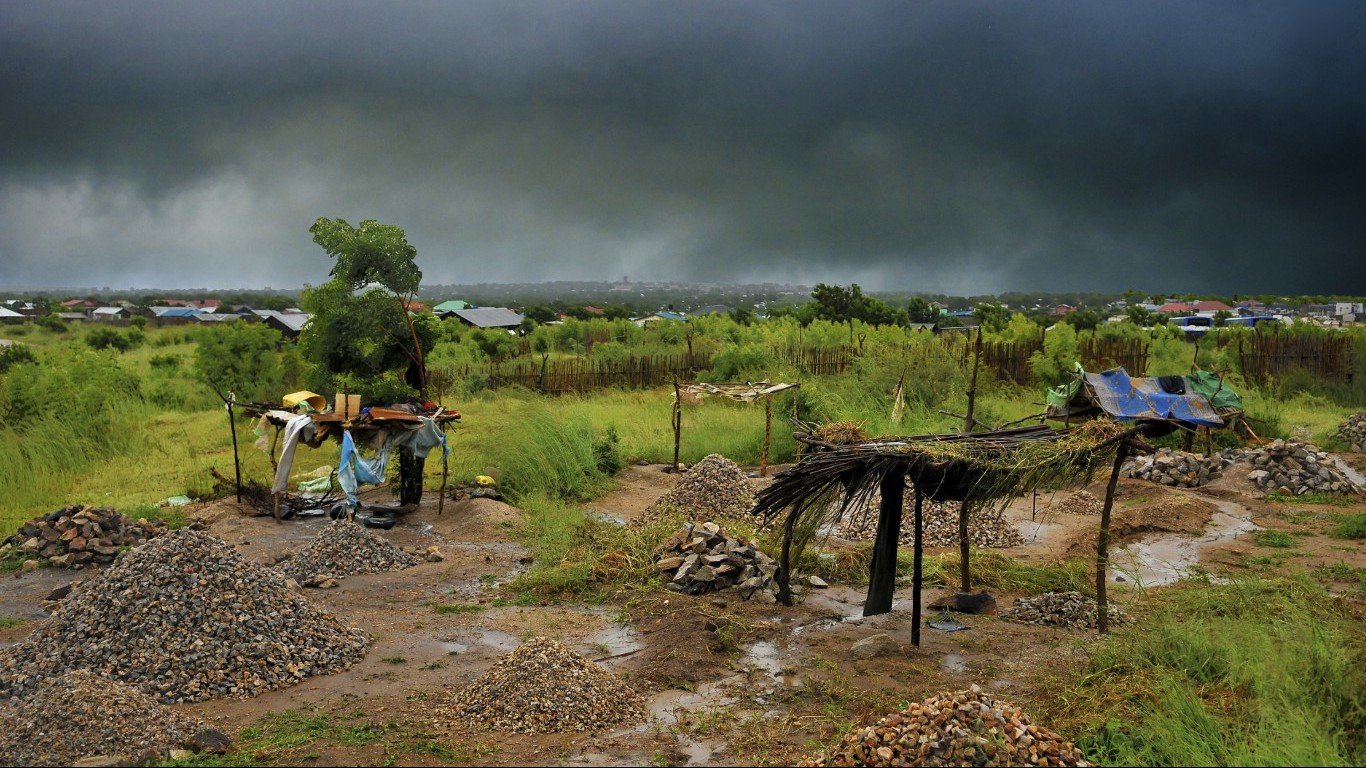
32. Republic of South Sudan
> 2015 Population: 12.3 million
> 2015 GDP per capita: $731
According to the U.S. State Department, South Sudan is unsafe for American visitors. Fighting between the government and rebel forces in the summer of 2015 led to an unstable security situation. The violence persists today despite the signing of a peace treaty and the implementation of a transitional government. Violence is not limited to the parties involved as foreign aid workers have been targeted in robberies, assaults, and shootings.
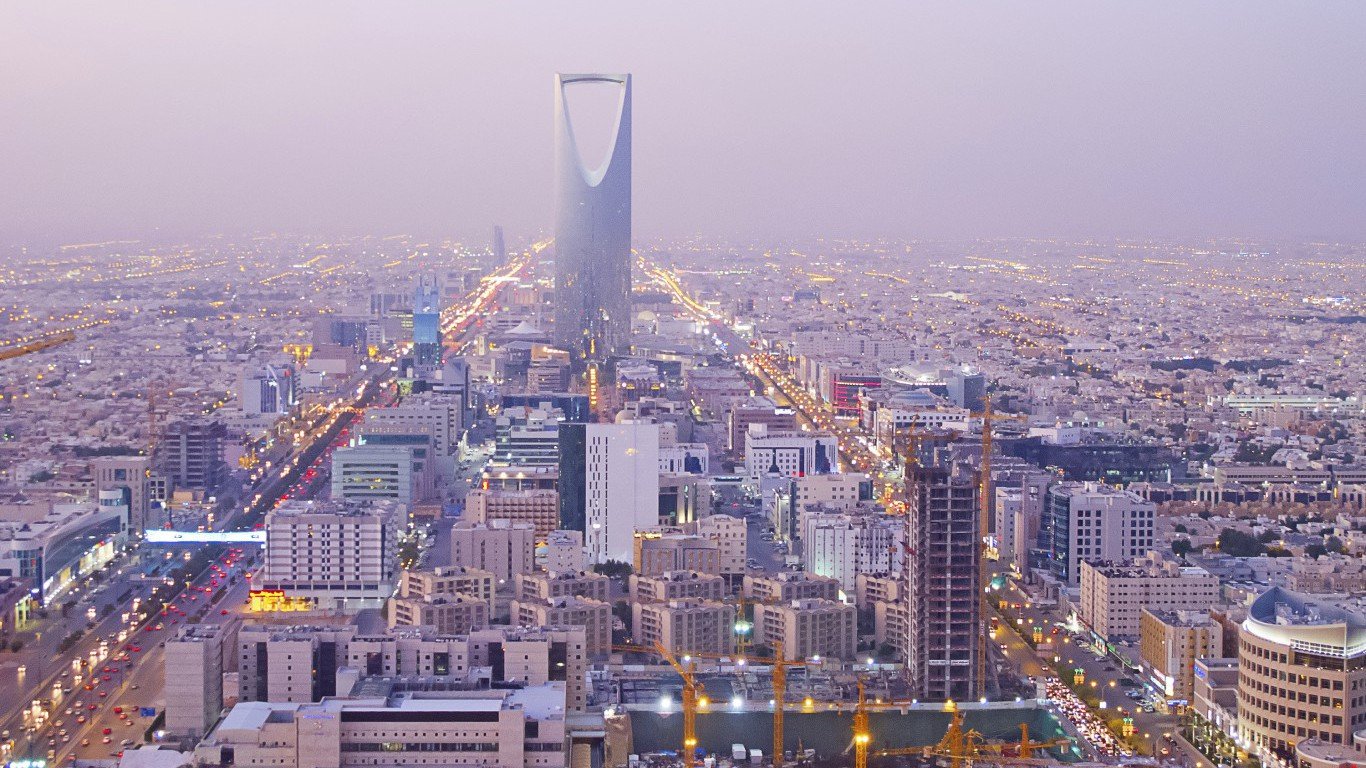
33. Saudi Arabia
> 2015 Population: 31.5 million
> 2015 GDP per capita: $20,482
With Iraq to the north and Yemen to the south, Saudi Arabia is surrounded by countries that serve as the bases of operations for multiple terrorist groups, including ISIS and al-Qaida. Such groups frequently target Western interests in Saudi Arabia as well as mosques, hotels, restaurants, and schools.
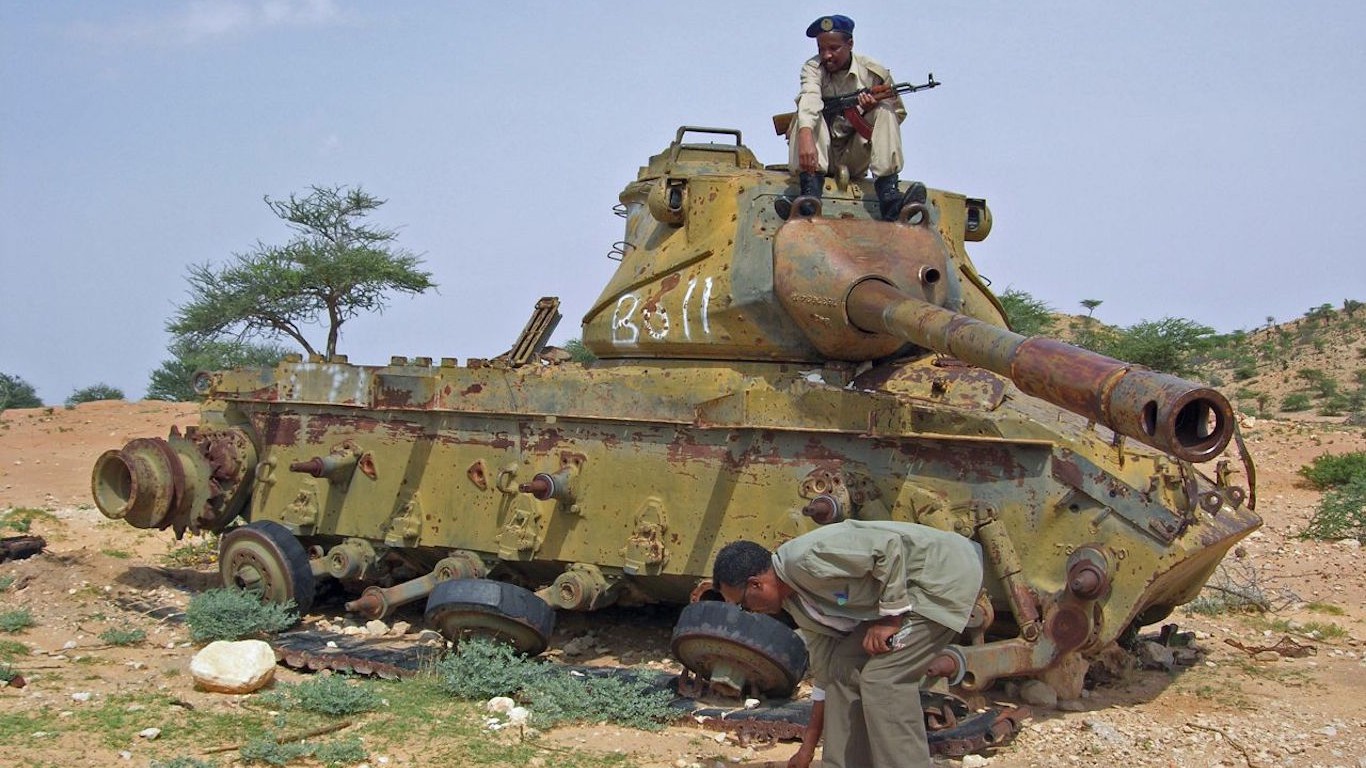
34. Somalia
> 2015 Population: 10.8 million
> 2015 GDP per capita: $549
With no U.S. embassy, the State Department is greatly limited in its ability to help U.S. citizens in Somalia. Terrorist group al-Shabaab is active in the country, and terrorist attacks across Somalia have targeted international relief workers, as well as restaurants and hotels frequented by Westerners. In 2016 alone there were at least 14 attacks on hotels, restaurants, and airports in the country’s capital, Mogadishu.
[in-text-ad-2]
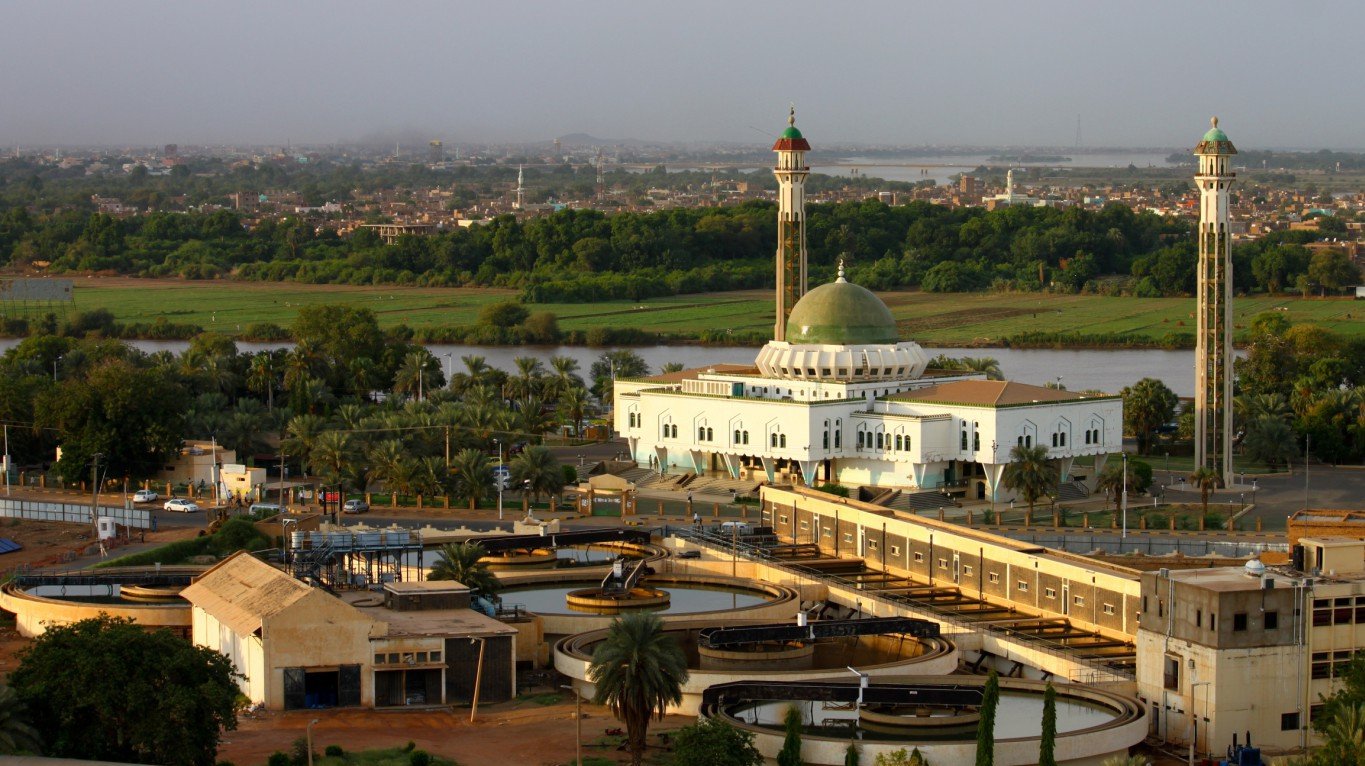
35. Sudan
> 2015 Population: 40.2 million
> 2015 GDP per capita: $2,415
Violent crimes are relatively common across Sudan and in the Darfur region in particular. Violence between Sudanese forces and rebel groups also pose risks to American travelers. Those traveling in the more dangerous regions of the country without express permission from the Sudanese government are subject to detainment. The country is also home to multiple terrorist organizations known to specifically target Westerners and Western interests with suicide bombings, shootings, and kidnappings.
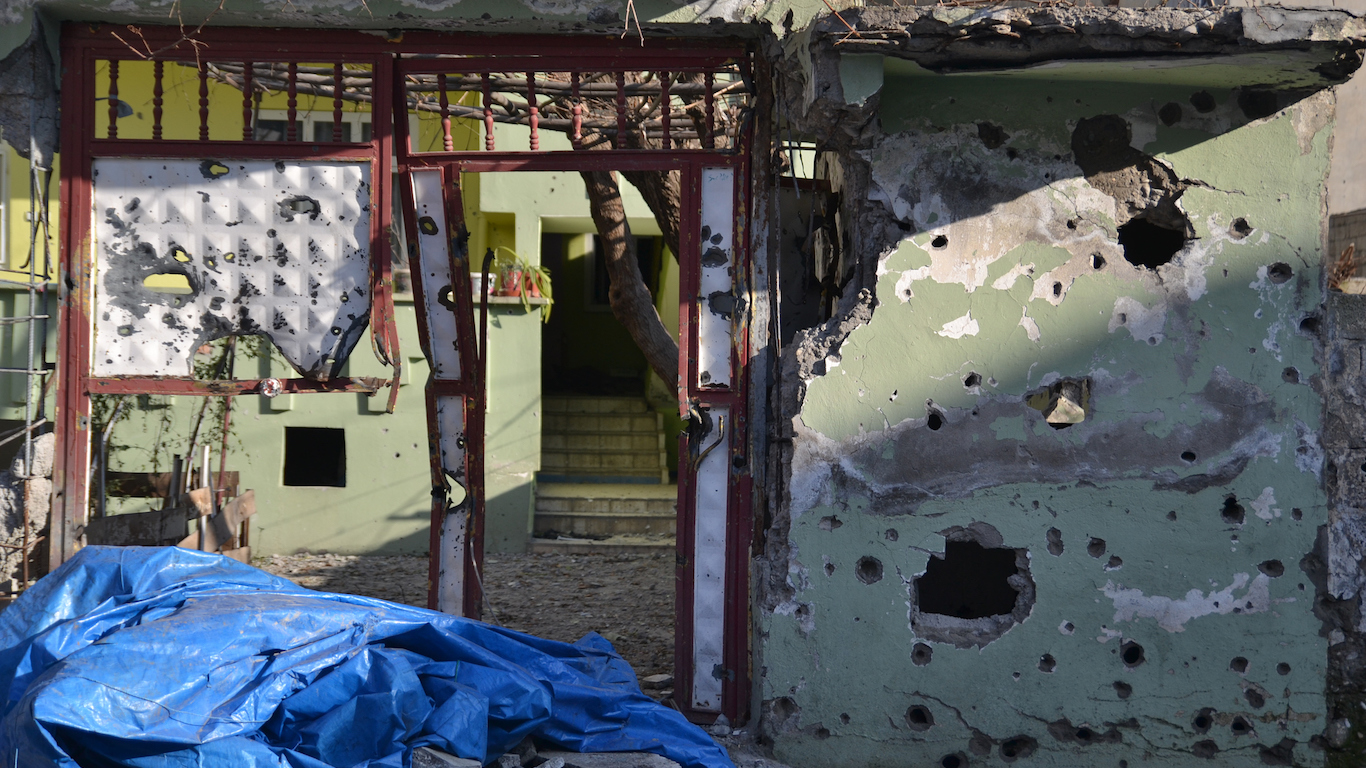
36. Syria
> 2015 Population: 18.5 million
> 2015 GDP per capita: N/A
The State Department discourages all travel to Syria and urges all Americans in the country to depart immediately. Currently, the country is at the epicenter of opposing global interests. Fighting between the government, backed by Iran and Russia, and rebel forces backed by the United States, has been especially gruesome and costly. The fighting included the use of chemical weapons and the intentional destruction of critical infrastructure. In addition, with a major stronghold in the northeastern city of Raqqa, the terrorist group ISIS regularly carries out bombings and shootings within the country.
[in-text-ad]

37. Tunisia
> 2015 Population: 11.3 million
> 2015 GDP per capita: $3,822
The travel warning for Tunisia exists largely because of terror threats along the country’s border with Libya. Recent attacks, initiated by groups affiliated with ISIS, have targeted tourist destinations as well as government interests. The State Department advises against travel near the Libyan border and in the mountainous western region of the country.
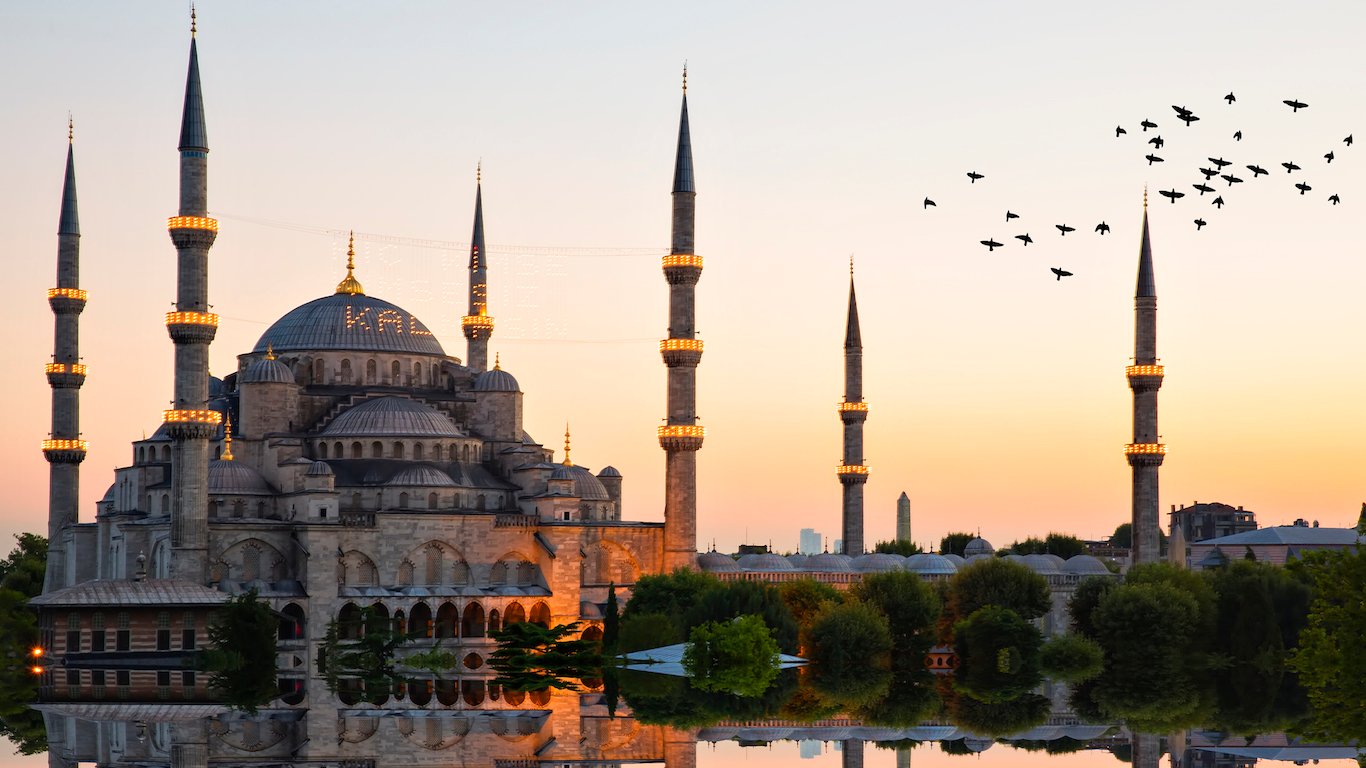
38. Turkey
> 2015 Population: 78.7 million
> 2015 GDP per capita: $9,126
Security circumstances are changing rapidly in Turkey following an attempted military coup in July 2016. The coup came on the heels of a deadly terrorist bombing at Istanbul’s international airport. The country is currently in a state of emergency, and the State Department restricts all U.S. personnel in the country from congregating or traveling in large groups or visiting tourist destinations, large bazaar markets, and museums in Istanbul without prior approval.

39. Ukraine
> 2015 Population: 45.2 million
> 2015 GDP per capita: $2,115
In addition to the Crimean Peninsula, which was invaded and annexed by Russia in 2014, the State Department urges Americans to stay away from Donetsk and Luhansk, cities in eastern Ukraine controlled by separatists supported by Russia. There have been frequent and deadly explosions from landmines and rocket attacks in the area. Separatist forces have also kidnapped and detained American citizens.
[in-text-ad-2]
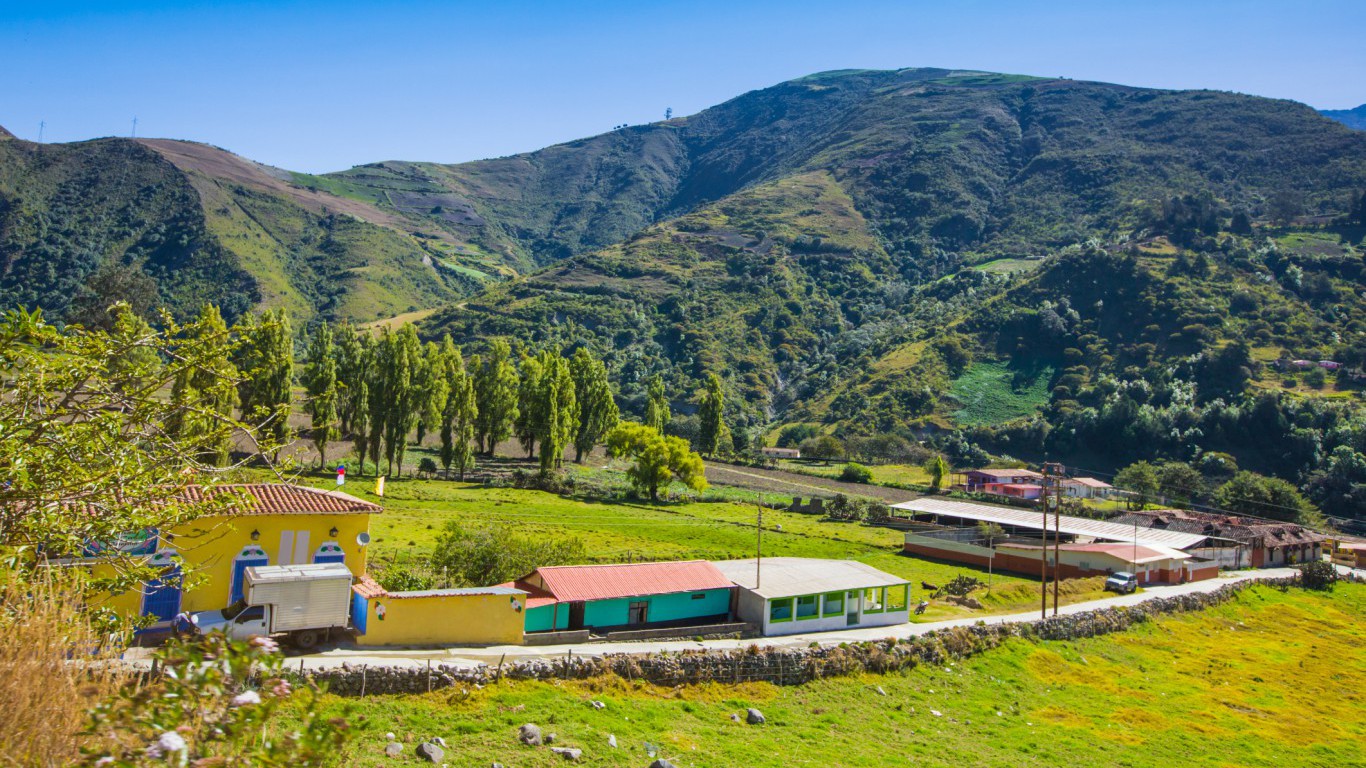
40. Venezuela
> 2015 Population: 31.1 million
> 2013 GDP per capita: $12,265
Rapid inflation of the Venezuelan currency has sent shockwaves throughout the country. Food and water shortages, along with inadequate access to electricity and medicine, have caused widespread unrest. The country has one of the world’s highest homicide rates, and criminals have been known to use assault rifles and explosives on undefended targets such as shopping malls and universities.
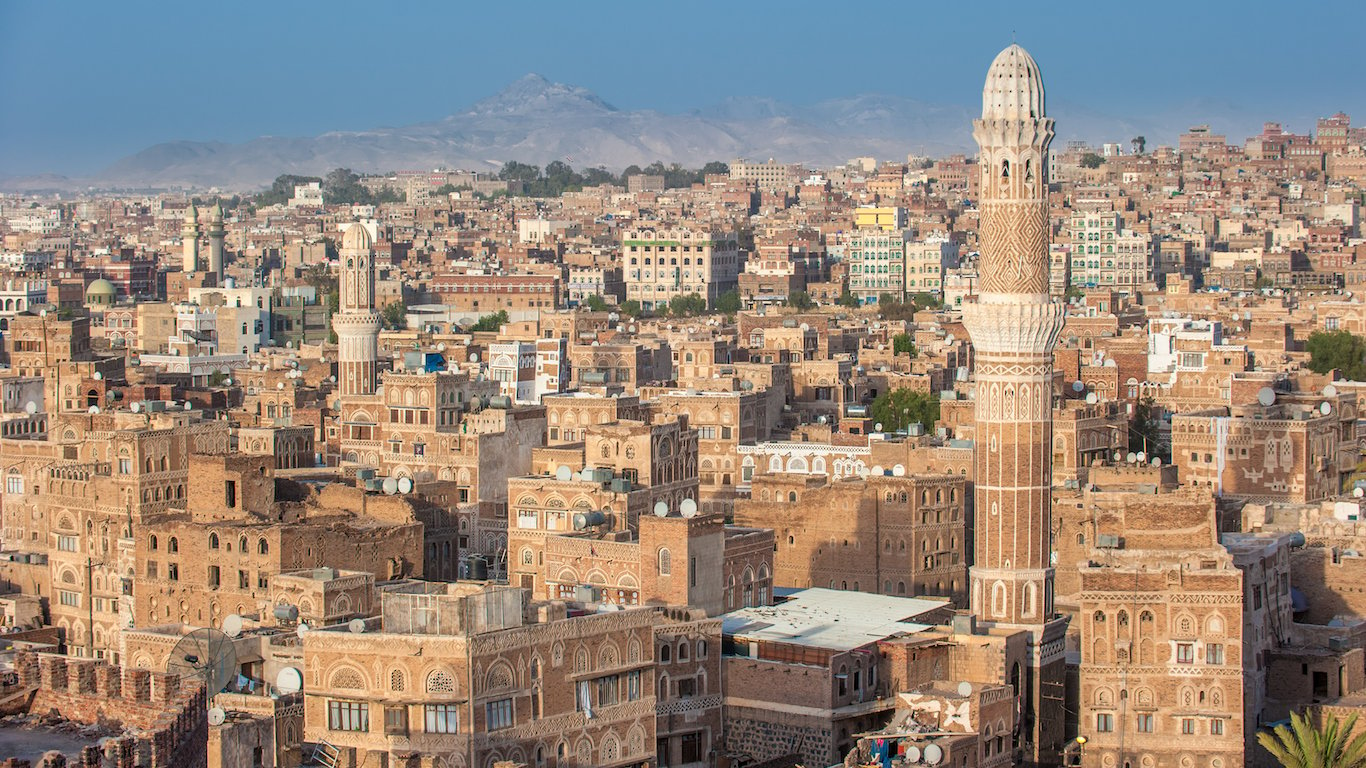
41. Yemen
> 2015 Population: 26.8 million
> 2015 GDP per capita: $1,406
Currently in the midst of a civil war, Yemen is one of the most dangerous countries in the world to visit. The U.S. embassy in the country was shuttered in 2015, and as a result, the State Department is largely unable to assist Americans in the country. In addition to conflicts between the government and rebel groups, multiple terrorist organizations, including al-Qaida, have operations within the country.
Want retirement to come a few years earlier than you’d planned? Or are you ready to retire now, but want an extra set of eyes on your finances?
Now you can speak with up to 3 financial experts in your area for FREE. By simply clicking here you can begin to match with financial professionals who can help you build your plan to retire early. And the best part? The first conversation with them is free.
Click here to match with up to 3 financial pros who would be excited to help you make financial decisions.
Thank you for reading! Have some feedback for us?
Contact the 24/7 Wall St. editorial team.